Publishing your content is the first step toward getting it in front of your target audience. But usually, the work doesn’t end there.
Content promotion is key to getting potential customers to see and engage with your blog posts, videos, podcasts, and more.
In this guide, we'll show you how to promote content across the channels that matter most to your business (basically, where your customers spend time online).
What Is Content Promotion?
Content promotion is the process of distributing and amplifying content across marketing channels.
How is this helpful?
Your content assets are usually designed to help with specific marketing goals. Like:
- Increasing brand awareness
- Driving traffic to your website
- Generating leads
- Boosting sales
Getting those assets in front of a larger audience helps you reach the associated goals more efficiently.
Here are 18 strategies you can use to promote your content.
Strategy 1: Enhance Visibility with Advanced SEO
Advanced search engine optimization (SEO) can amplify organic content discovery.
Advanced SEO goes beyond basic tactics like keyword optimization. It uses methods like these to rank your content closer to the top of search engine results pages (SERPs):
Create Topic Clusters
Don't limit yourself to just one, single piece of content on a topic. Instead, organize your website content in topic clusters. These are groups of blog posts or webpages that aim to establish your website as an authority on a certain topic.
A topic cluster is made up of two main types of content:
- Pillar pages offer a comprehensive overview of a topic
- Cluster pages provide more detail on specific aspects of the broader topic
The pillar page acts as a primary hub. And links to each of the cluster pages for more detailed information.
Here’s a topic cluster example:
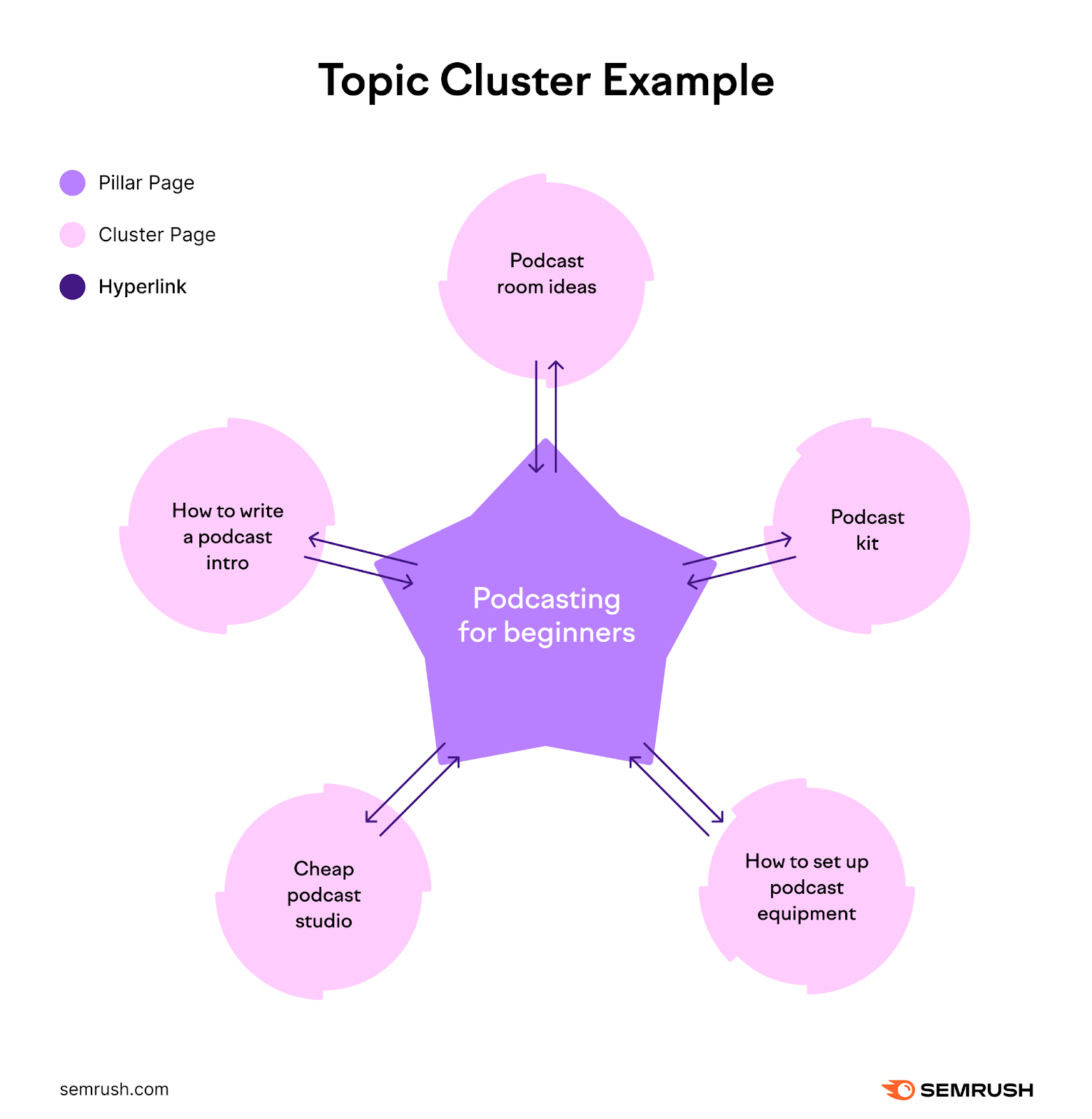
Use Semrush's Keyword Strategy Builder to create clusters.
To get started, log in to Semrush.
Select “Keyword Strategy Builder” from the menu on the left-hand side. It’s in the ”KEYWORD RESEARCH” section.
Enter a seed keyword into the text field. For example, “pizza list.”
Select your location in the drop-down if you want to. Then press “Create list.”
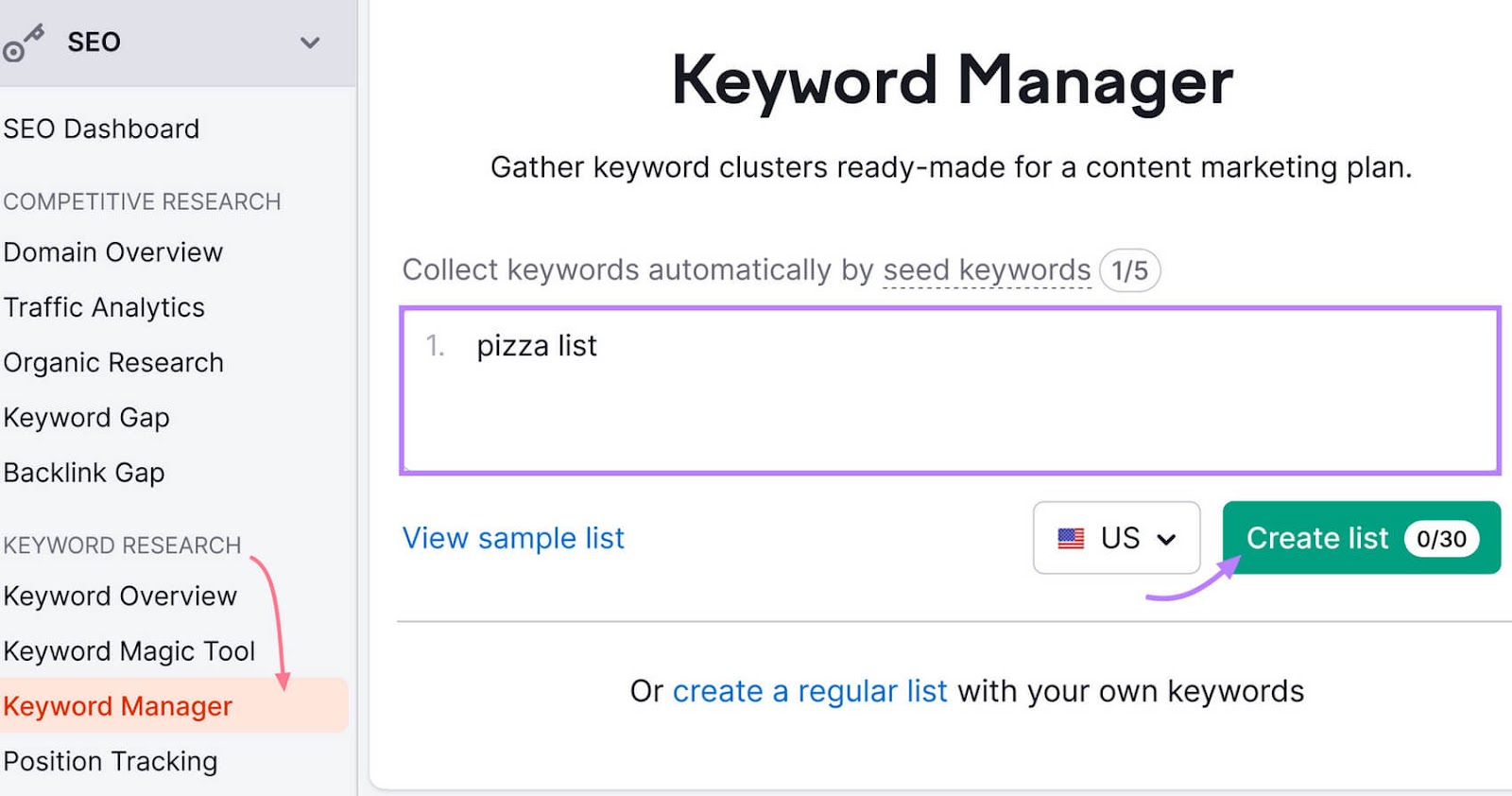
You’ll get a list of keyword clusters. These are keywords arranged by theme. Like this:
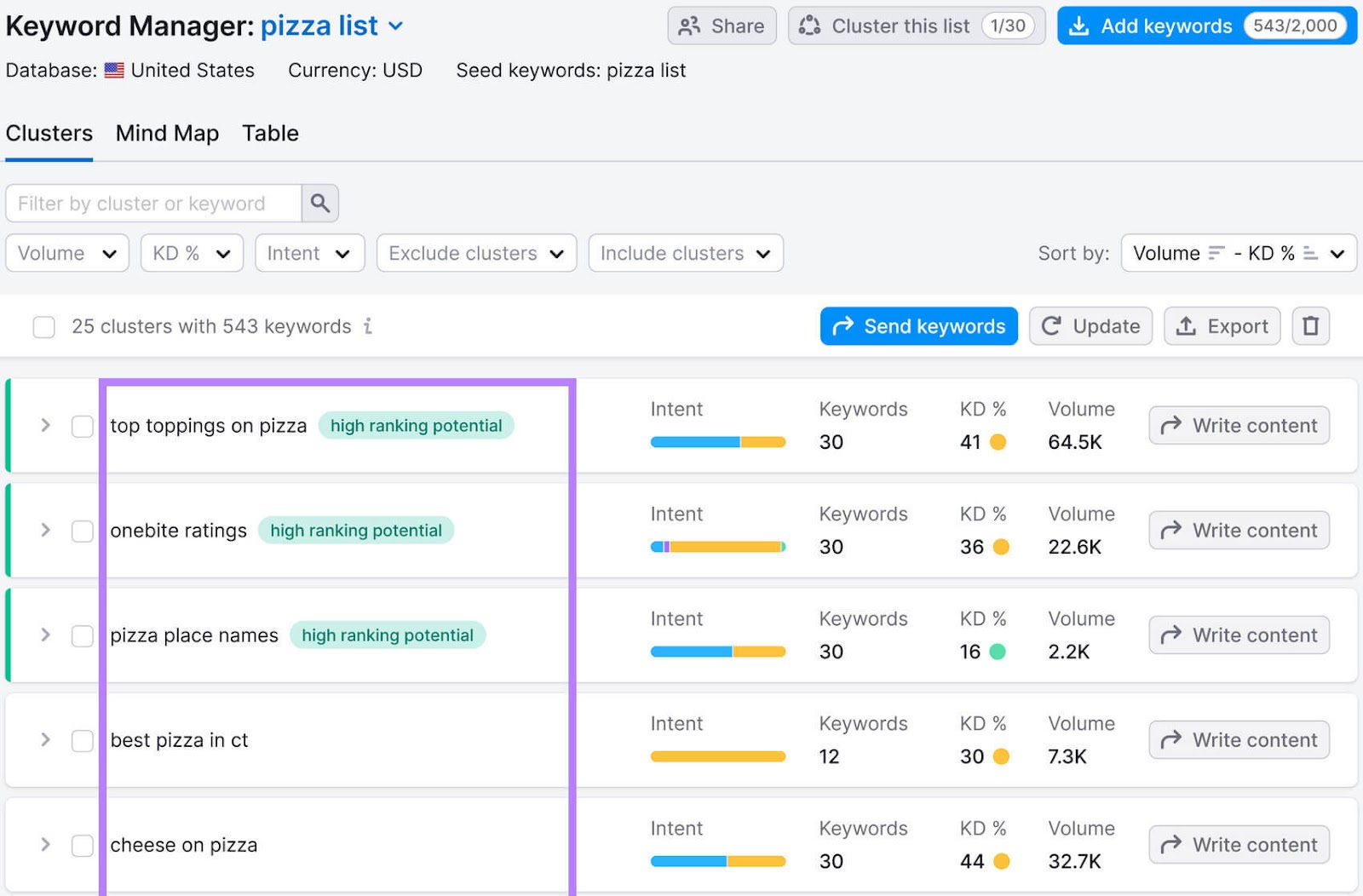
Choose a cluster topic that you’d like to write about. For example, “top toppings on pizza.” This will be the topic for your pillar page.
Click the arrow next to that keyword cluster to reveal a list of cluster-specific keywords. For example, “popular pizza toppings,” “homemade pizza toppings,” and “pizza combos.” These will be the topics for your cluster pages.
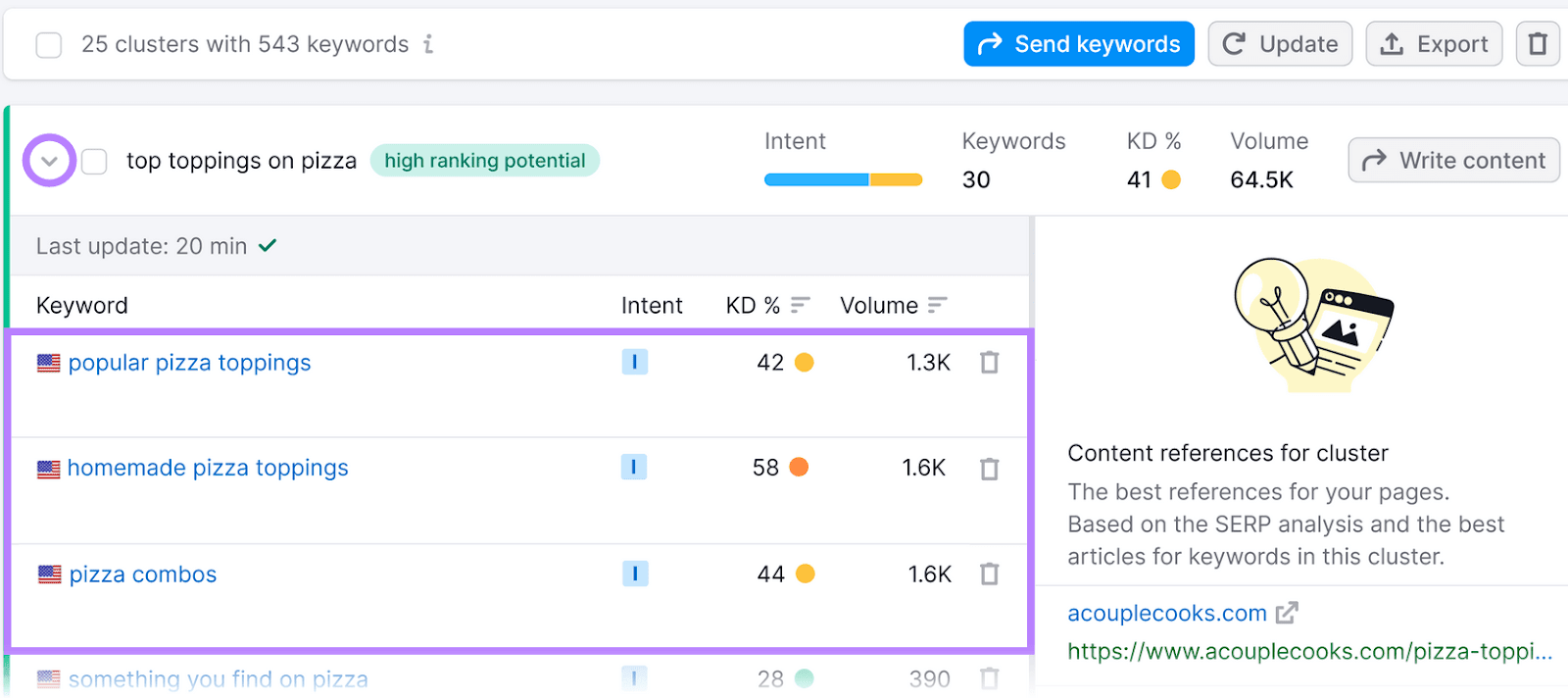
Using our example, you might end up with a pillar page about trends in pizza toppings. It would use the keyword “top toppings on pizza.” And from that pillar page, you’d link to cluster pages that go deeper on the relevant subtopics. Like how certain pizza toppings became popular, how to make homemade pizza toppings, and what combinations of pizza toppings you recommend. Those cluster pages would use their respective cluster-specific keywords.
This interlinked set of pages—highly relevant to a group of related keywords—will help demonstrate to Google’s algorithm that you are an authority on the topic. As a result, your pages are likely to be ranked higher in search results for those keywords.
Secure Featured Snippets
Featured snippets are specially formatted search results that usually appear at the top of the SERP, above organic search results. Like this:
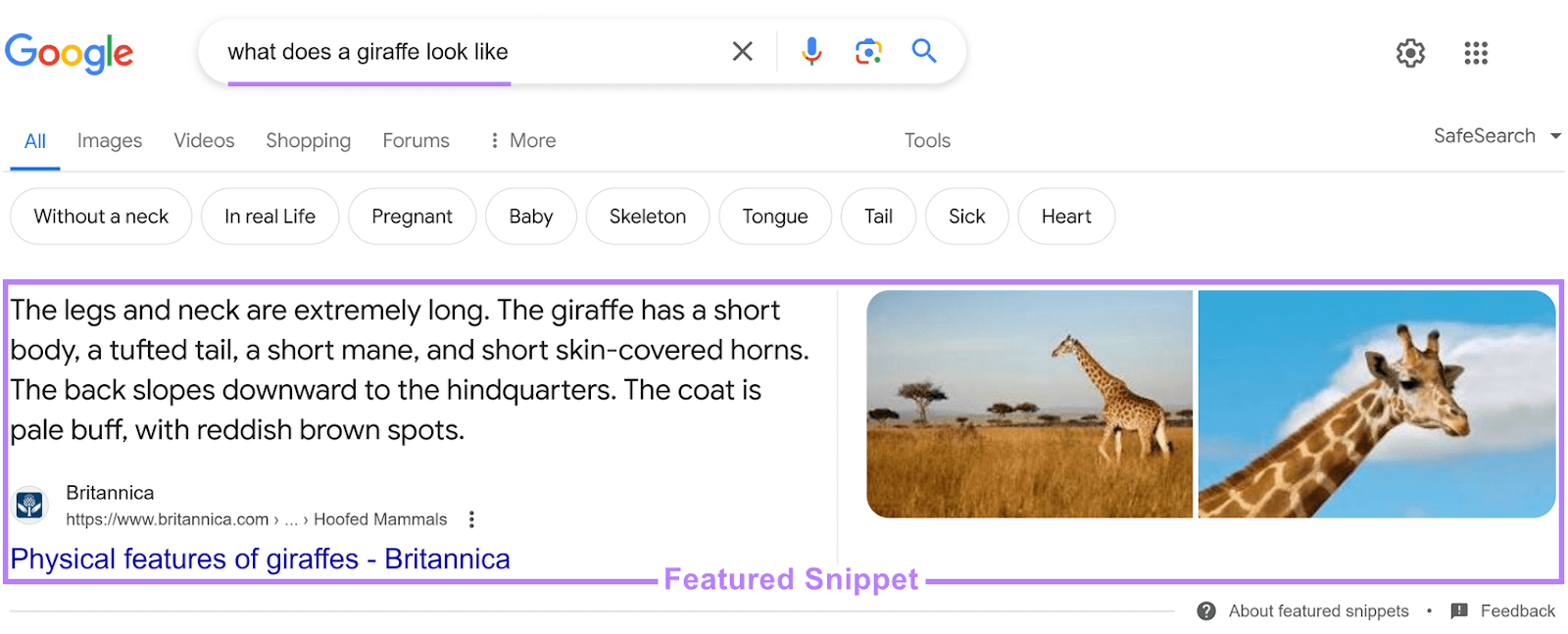
Because of their prominent position and larger size (compared to standard search results), featured snippets can lead to more search traffic.
Use Semrush's Keyword Magic Tool to find relevant featured snippet opportunities.
To start, select “Keyword Magic Tool” from the left-hand menu in Semrush. It’s under the “KEYWORD RESEARCH” section.
Enter the keyword you’re targeting, select your location in the drop-down, and press the “Search” button.
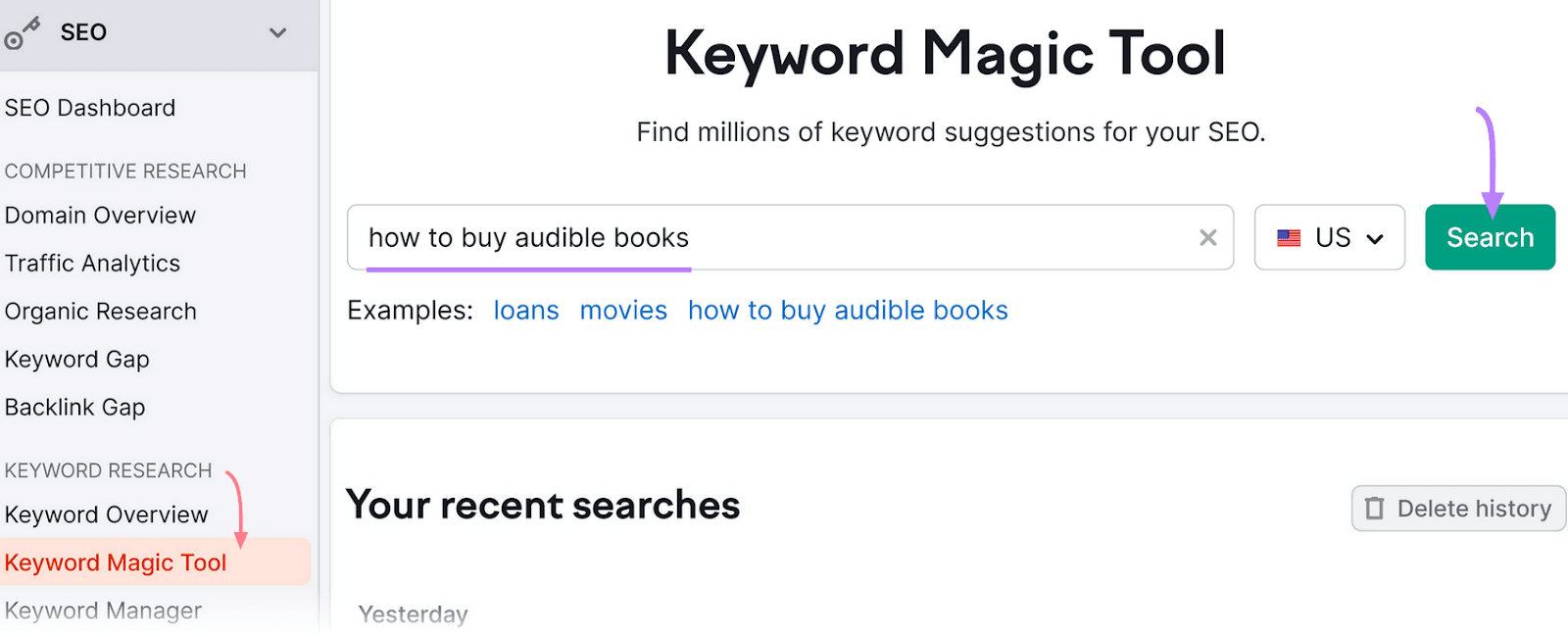
Browse the Keyword Magic Tool results. Click any keyword you want to explore further.
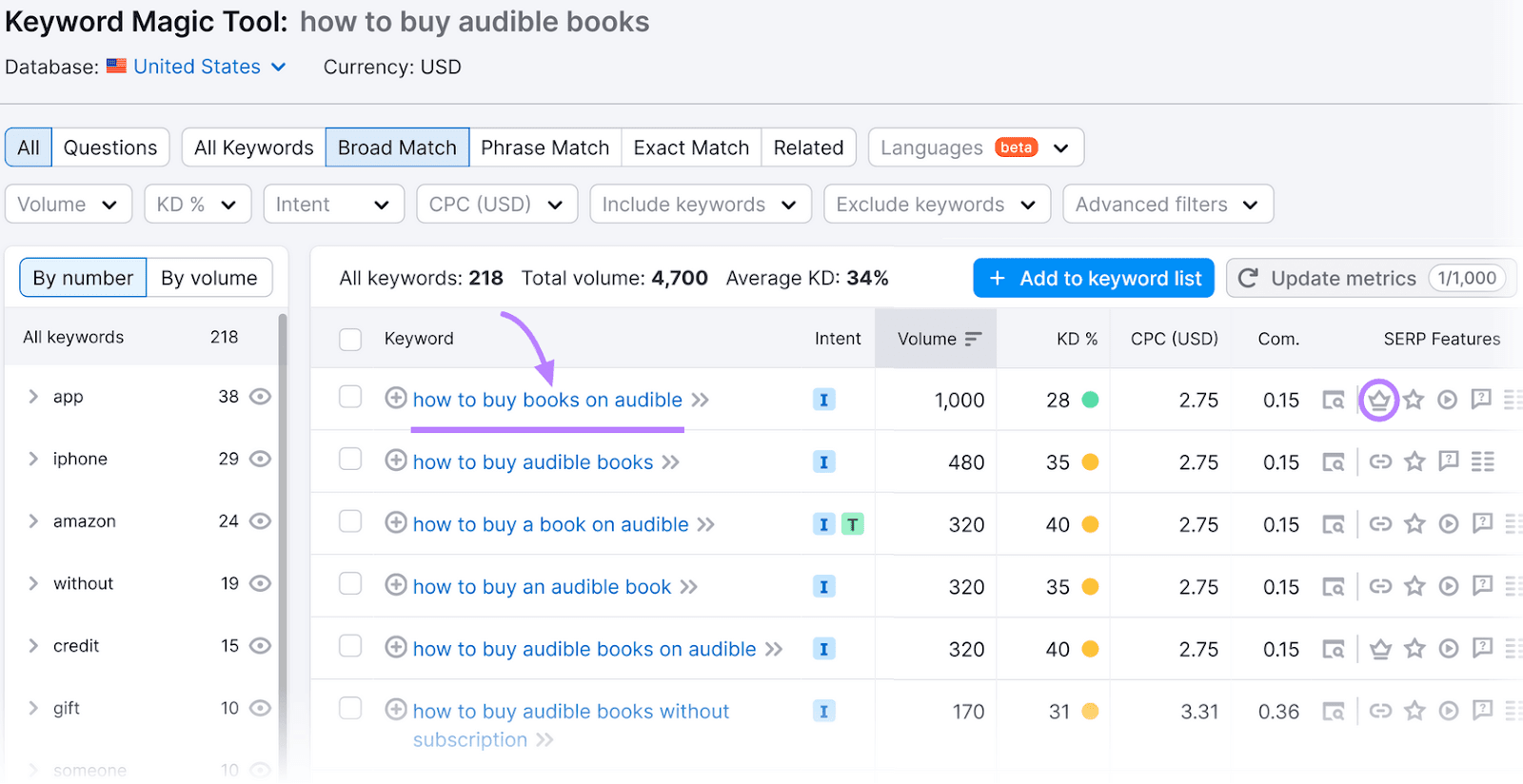
When you click a keyword, you’ll be automatically directed to Keyword Overview. There, you’ll see an “Overview” tab full of information about that keyword.
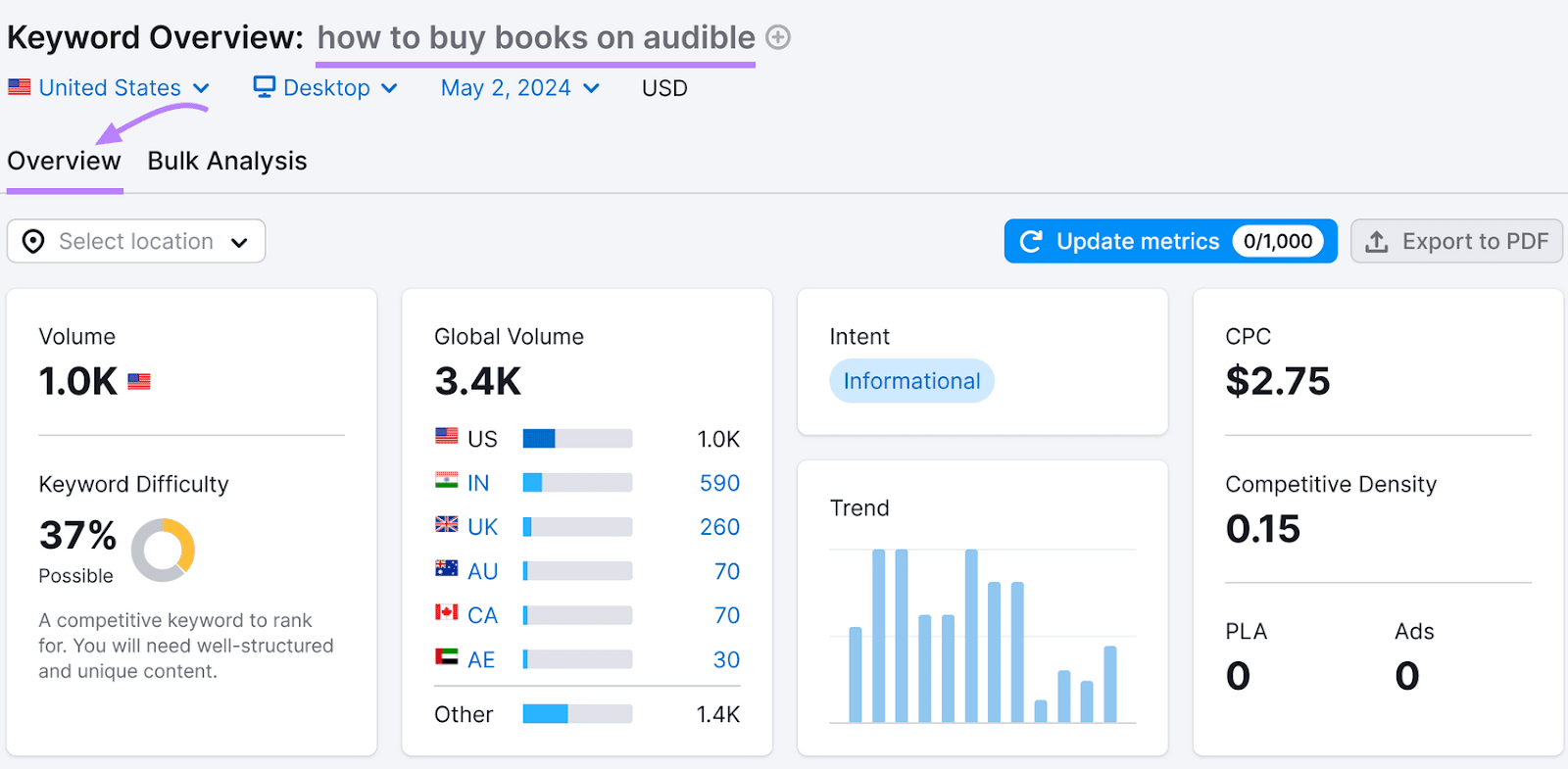
Scroll down to the "SERP Analysis" panel to view featured snippets for that keyword. Then, optimize your content to capture these SERP features.
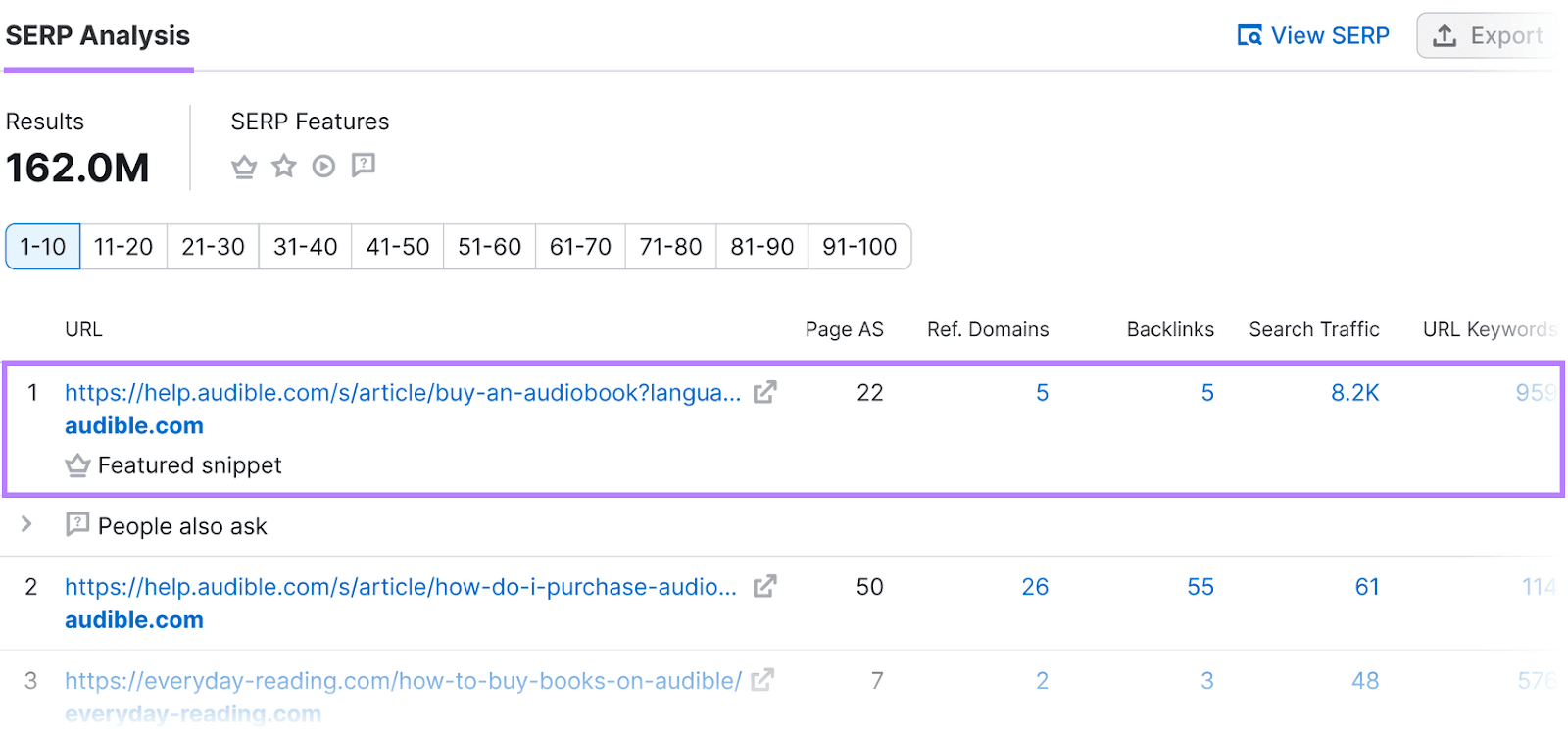
Add Structured Data
Including schema markup on webpages and blog posts gives search engines more information about your content. It also increases the odds your content will be used to display a rich snippet, which takes up more space on SERPs.
For example, this search result from Sally's Baking Addiction shows structured data like ratings, reviews, and the time needed to make the recipe.

Strategy 2: Internally Link to Your Most Effective Content
If you have an active content marketing strategy, you have countless opportunities to promote evergreen content via internal links.
Internal links are links on your website that lead to other pages on your site. They’re important because they pass acquired authority (via PageRank) to more pages on your site, clarify your site structure for search engines, and help site visitors discover more of your content.
Use Semrush's Site Audit to analyze your site's internal link portfolio.
To start, select “Site Audit” from Semrush’s left-hand menu. It’s in the “ON PAGE & TECH SEO” section.
Click the “Create project” button and input your domain. Or select from your existing projects.
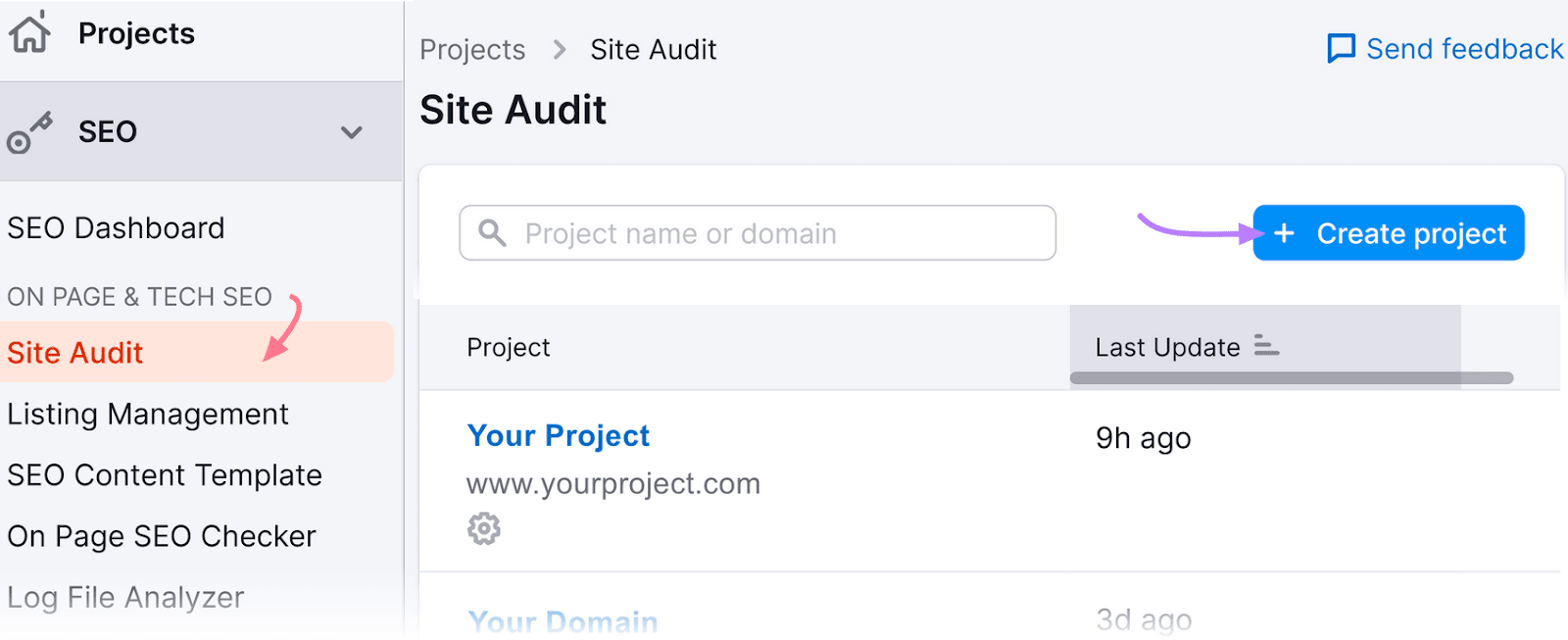
From the dashboard, find the "Internal Linking" panel in the “Thematic Reports” section and click the “View details” button.
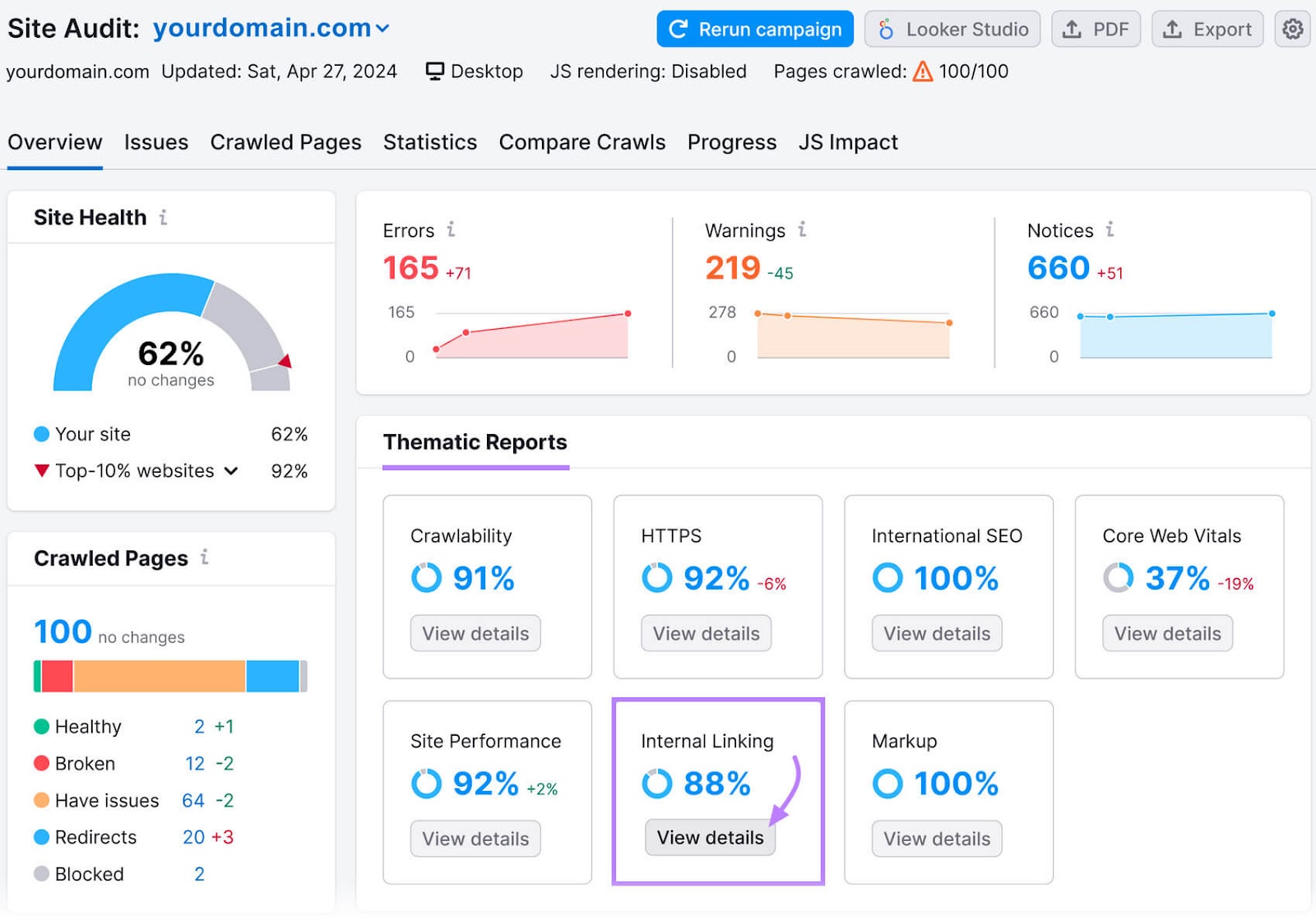
Click to view each of the groups listed on the “Internal Link Distribution” panel (strong, medium, weak).
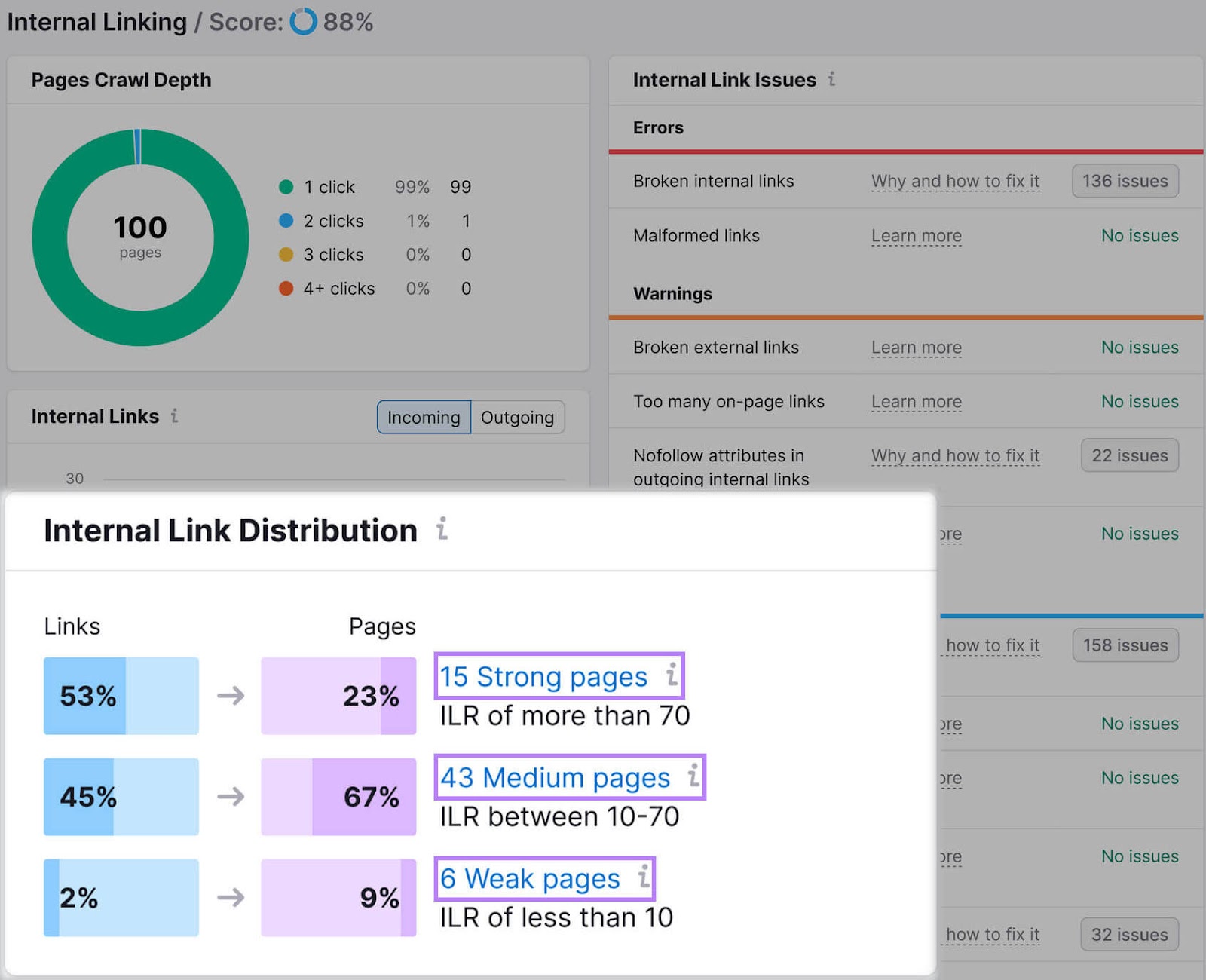
Strong pages have high Internal LinkRank (ILR). That means they're the most authoritative. To improve ILR for weak or medium pages, link to them from strong pages.
Strategy 3: Build Links by Monitoring Competitor Mentions
Backlinks are external links that point to your website.
Here’s an example of a backlink pointing to Semrush from Adobe Express:
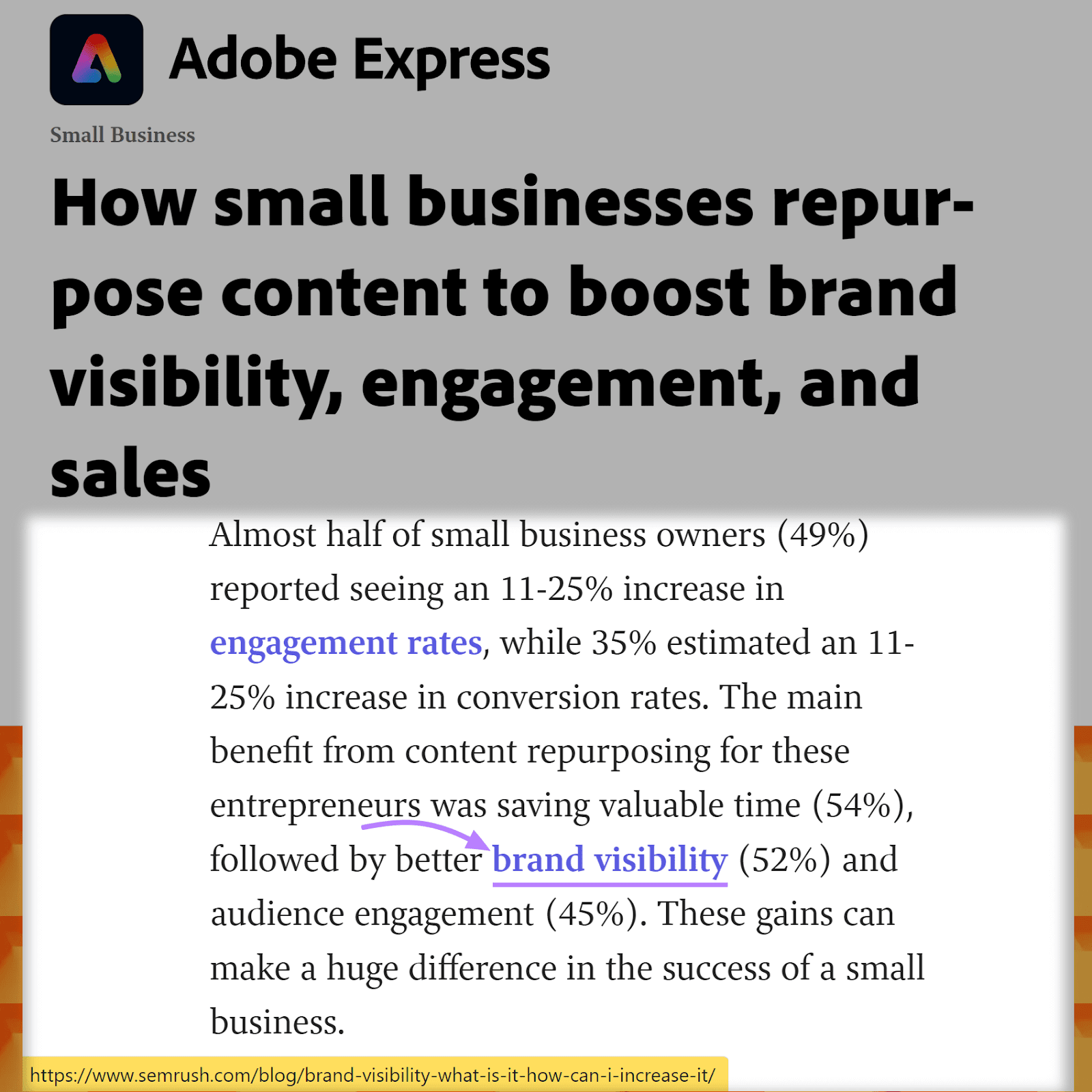
Link building is a strategy that involves attracting backlinks.
This is a content promotion tactic. Backlinks means your content will be more discoverable for people visiting on the backlinking site. And because Google views backlinks from high-quality sites as a signal that your content is also high quality, backlinks can improve authority and your SEO.
To map out a link-building strategy, you have to find the right opportunities.
Start by checking where your competitors are acquiring backlinks. Use Semrush's Brand Monitoring app to search for competitors. The app automatically collects brand mentions from social media platforms, news sites, review sites, and blogs.
Using Brand Monitoring data, make a list of sites and publishers to ask for backlinks.
Strategy 4: Take an Omnichannel Approach
Amplifying content across multiple marketing channels creates more opportunities to reach and engage your target audience.
Suppose you only share content via your Facebook page. You'll struggle to reach people who don't follow you there. In contrast, suppose you amplify content via SEO, your email list, and your Facebook page. You'll have a chance to reach people searching for your topic and people who follow your page and subscribe to your list.
Consider these numbers:
- The average social media user accesses 6.7 platforms every month, according to Backlinko
- A typical B2B decision-maker uses 10 or more channels to engage with suppliers, according to McKinsey
You’ll want to promote your content in as many channels as your target audience(s) is active in.
Strategy 5: Create Social Media Content to Share at Scale
If you have social media accounts with followers, you have a built-in audience for content promotion.
To reach and engage the largest possible audience, your social media posts have to resonate with your followers. Use Semrush's AI Writing Assistant to create and share relevant social posts quickly.
Find the AI Writing Assistant in the Semrush App Center under the “AI Apps” category.
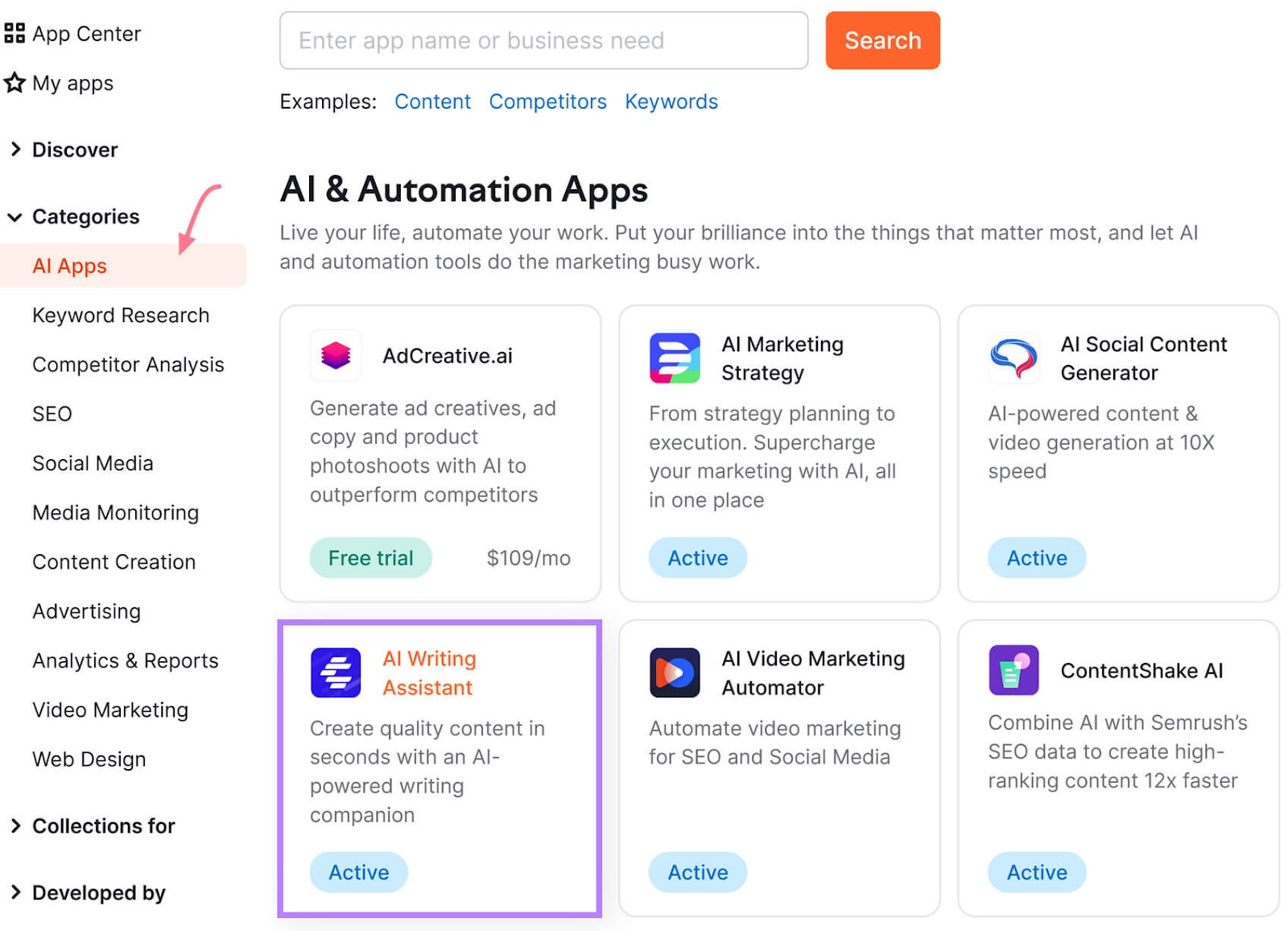
In the app, click to open the “All Tools” tab on the left. Then, choose "Social Media Post (Business)" as the content type.
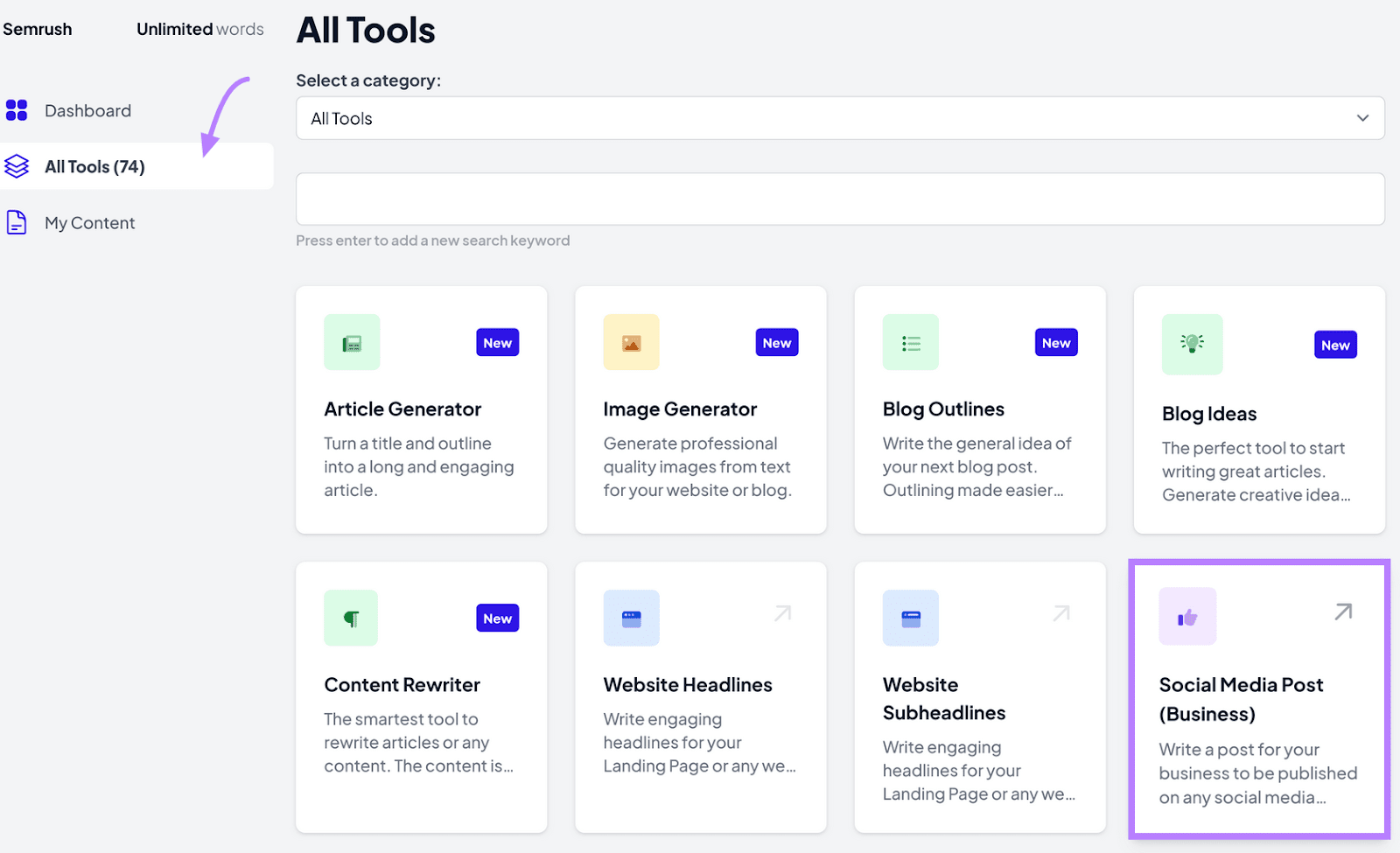
Input details about your business, tone of voice, language, topic and creativity level. Then, click the “Generate” button.
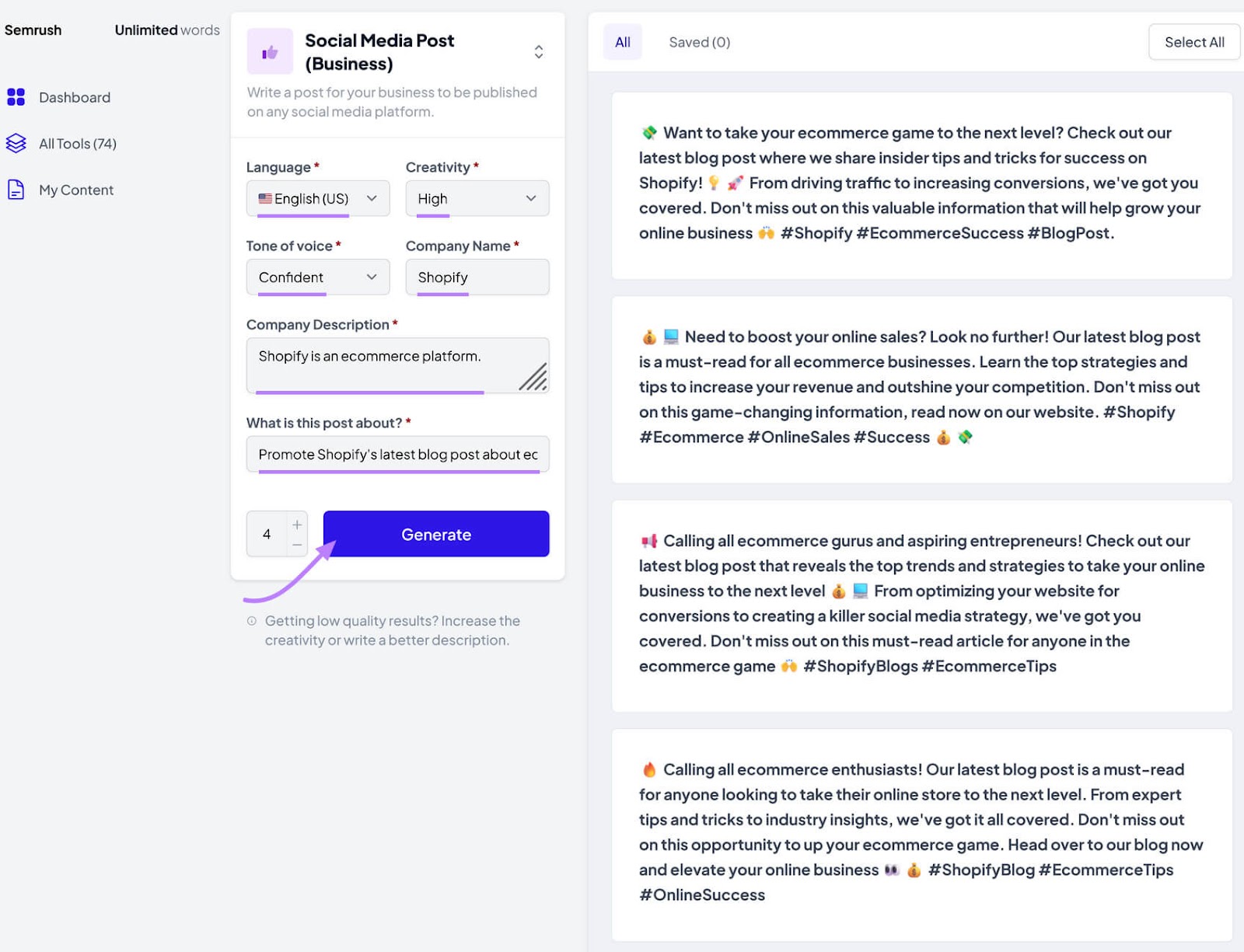
Review the AI-generated options and copy the caption you want to use. Paste it directly into the social media channel of your choice.
Wondering which social media channels are best for attracting your target audience?
Use Semrush's One2Target tool to see the social media sites where your target audience(s) spend time.
To start, select “One2Target” from the Semrush menu. It’s under “.Trends.”
Enter up to five competitor domains. Press Enter, return, or tab after each. Then click the “Analyze” button.
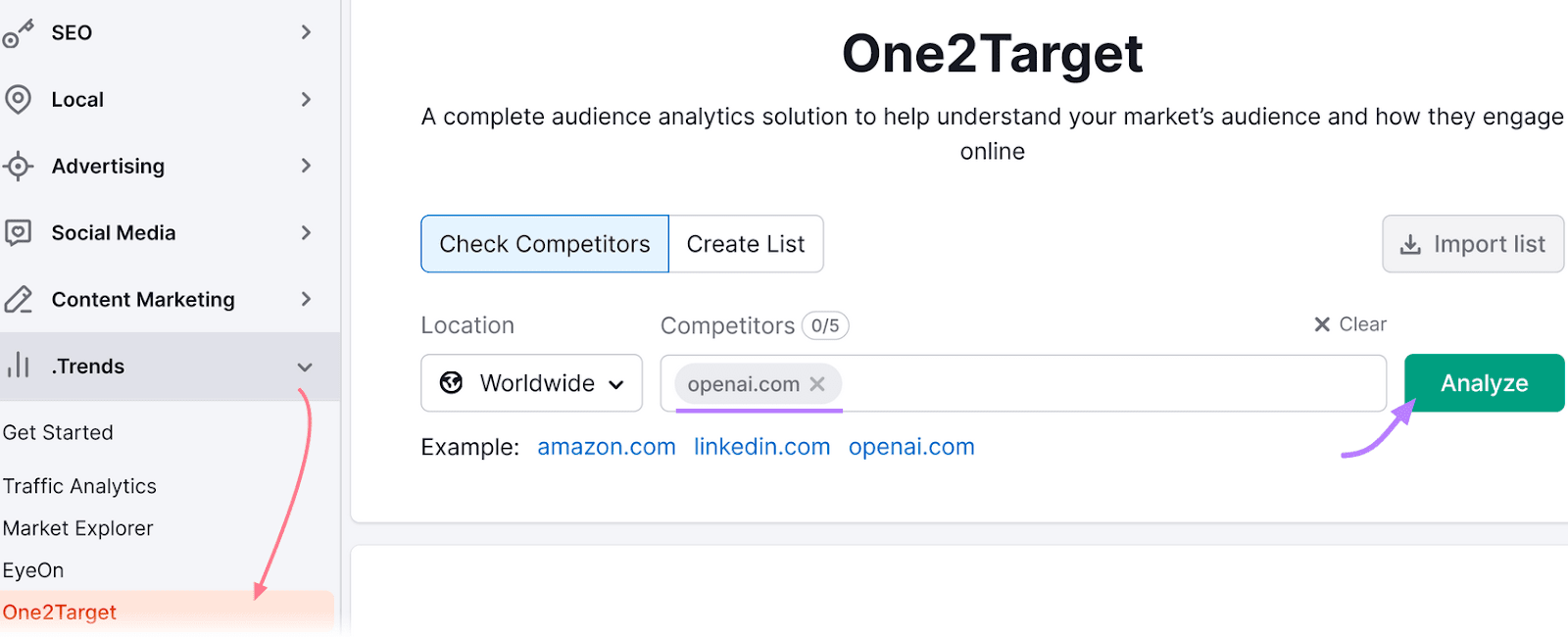
Click the “Behavior” tab to see an audience analysis. This includes which social media channels your customers use most.
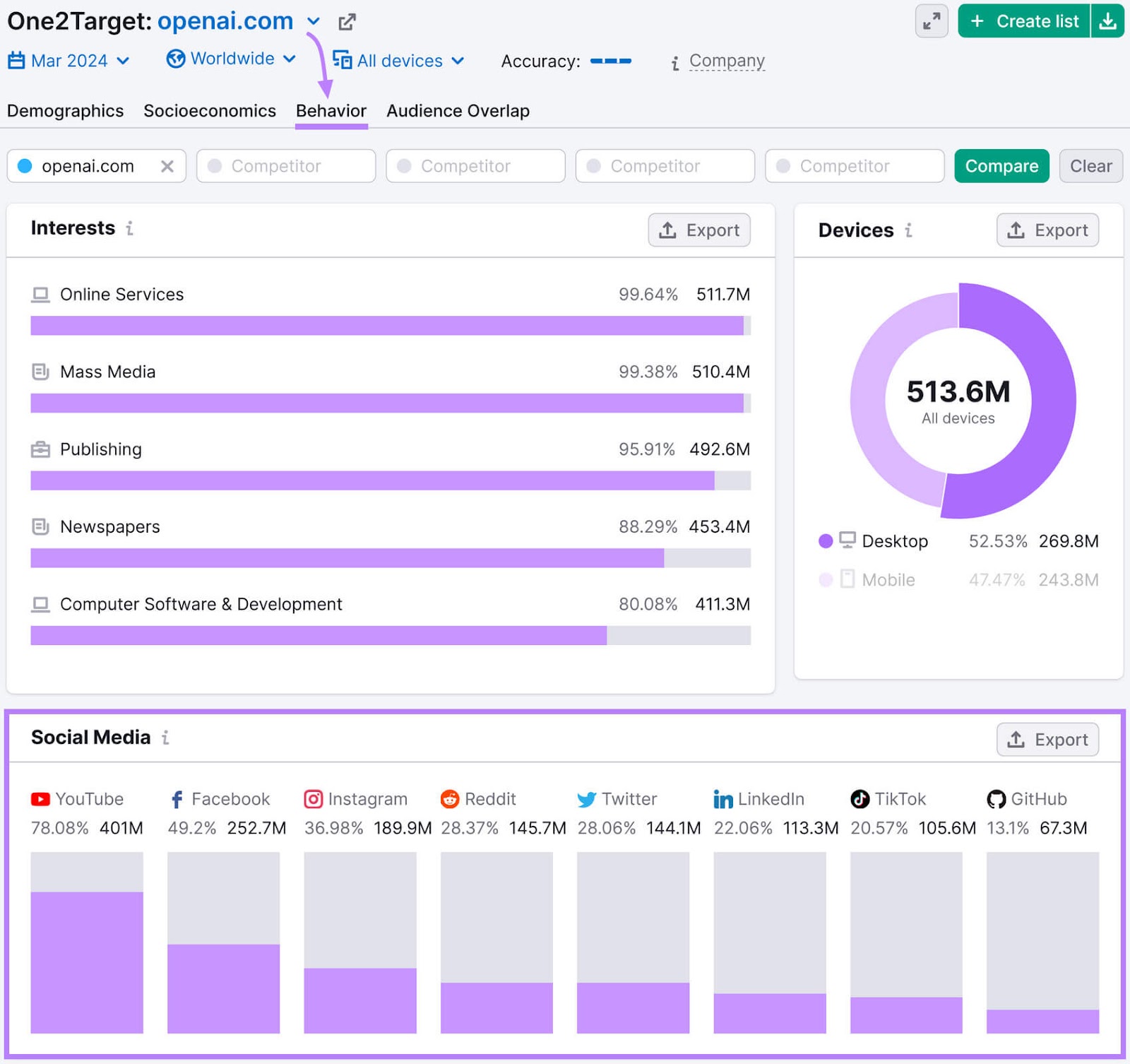
Prioritize the most popular channels in your content distribution strategy.
Strategy 6: Use the Comment Section to Engage and Promote
Posts aren't the only way to promote content on social networks. Comments also offer content promotion possibilities.
Create value for your audience by leaving engaging comments on others' content. For example, leave relevant comments on posts by partner brands, loyal customers, or influencers.
Avoid sounding overly promotional. Instead, share your brand's perspective authentically. When you have something directly relevant, leave a helpful resource in the comments.
Respond to engagement on your business's social posts, too. Reply to comments with empathy, humor, helpful advice, and—when highly relevant—links to blog posts, podcasts, or videos.
Use Semrush's Social Dashboard to monitor social account inboxes.
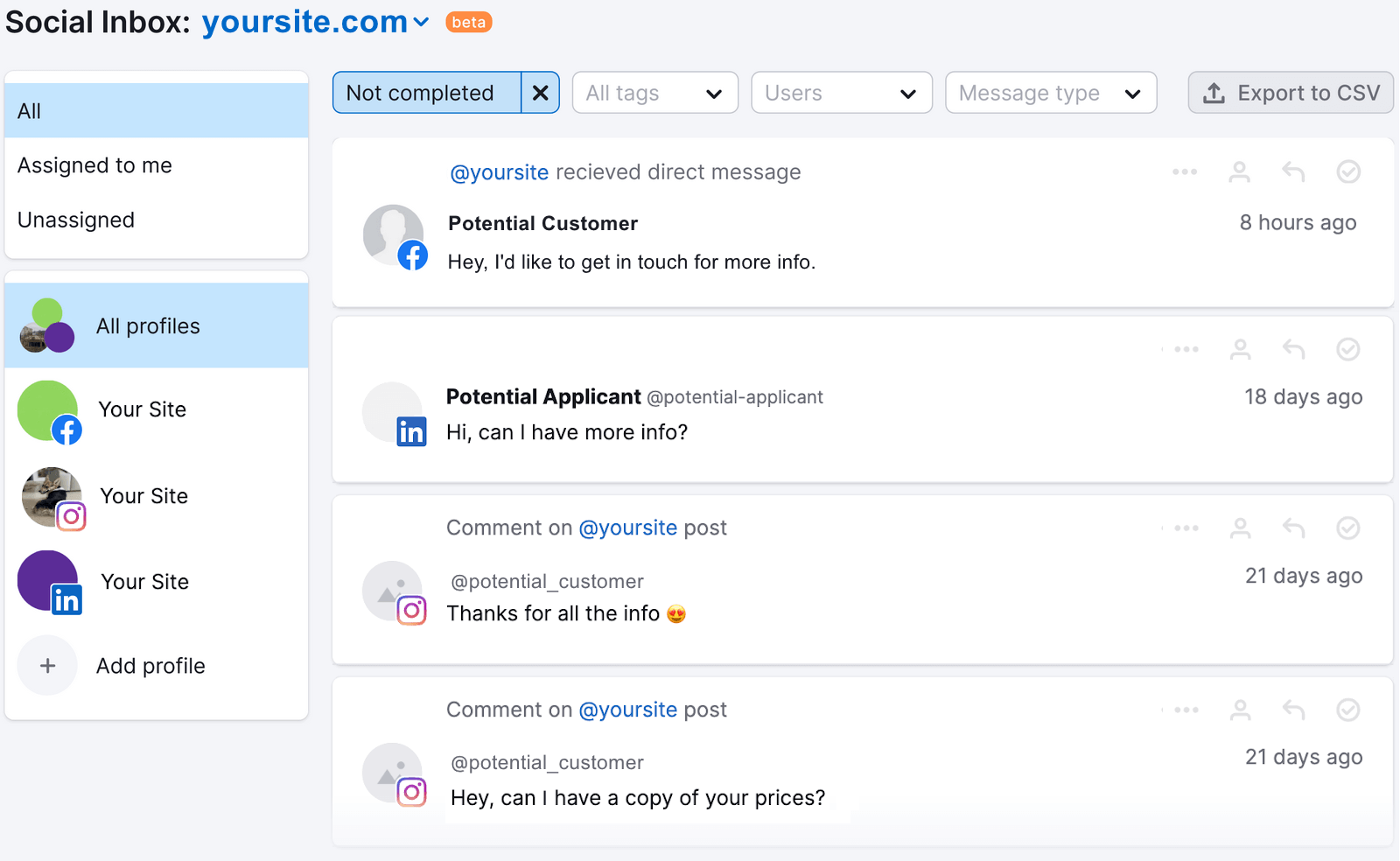
Strategy 7: Time Your Social Posts
Getting the timing right is crucial for content promotion on social media.
That’s because social media algorithms consider signals like engagement when determining whether to place a post in a user's feed. If your post gets likes and comments right away, it’s more likely to reach a wider audience.
So ideally, you want to post when your target audience is online and ready to engage.
To determine the best possible time to promote content with posts, check your Semrush Social Dashboard.
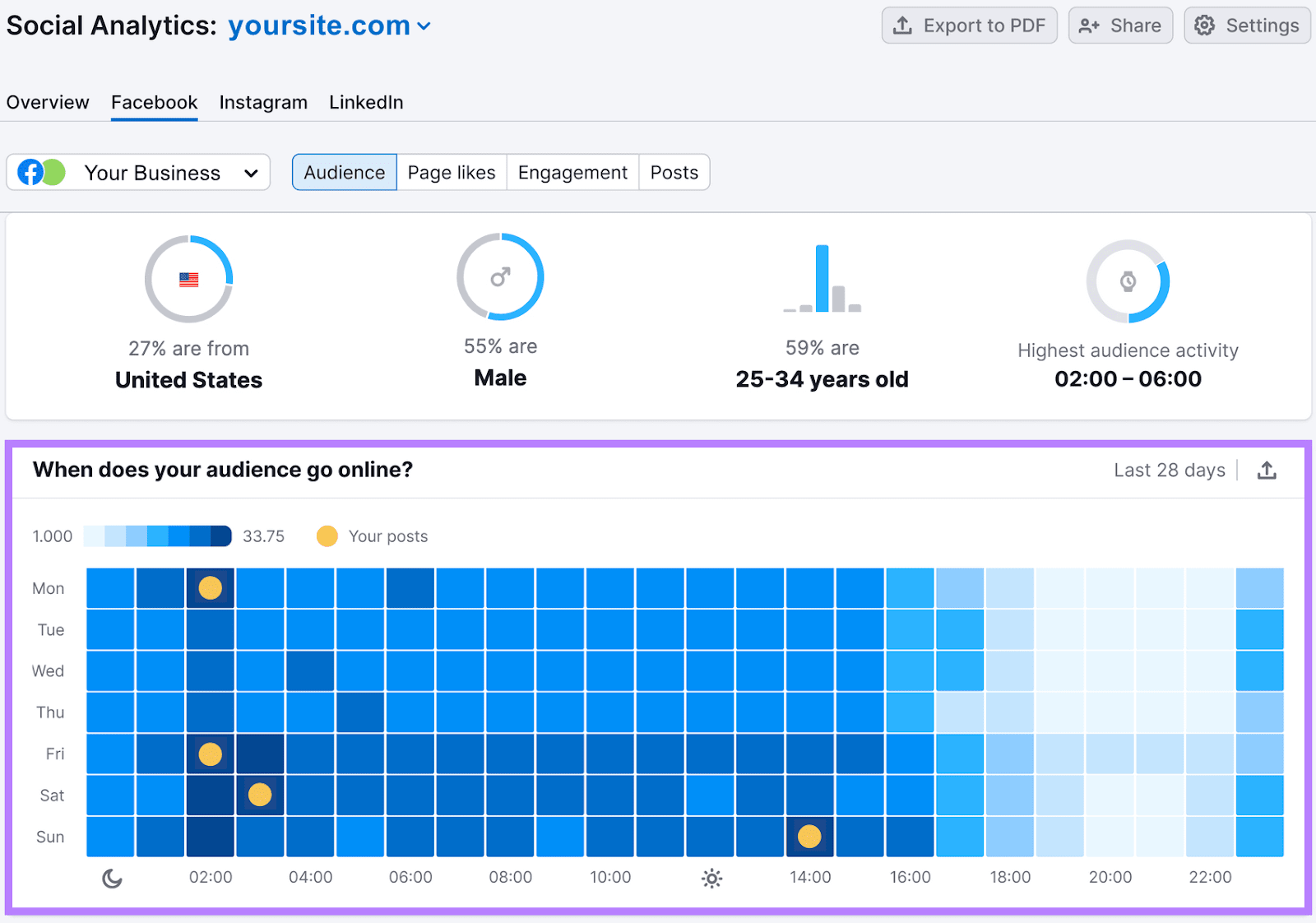
It shows when your Facebook, Instagram, and LinkedIn followers are online, down to the hour. Darker blue squares mean a higher percentage of your followers is online.
If the largest percentage of the audience is online from 1 p.m. to 2 p.m. on Mondays, Tuesdays, Thursdays, and Fridays, schedule social media posts to go live at these times. That way, you reach the most followers possible.
Strategy 8: Foster Engagement in Online Communities
When you cultivate an online community on platforms like Discord, Slack, or even using Facebook groups, your customers often help promote content on behalf of your brand.
Why are communities so effective? They attract your most loyal customers. The ones more likely to recommend your brand. According to Tint:
- 73% of consumers report having a positive opinion of online brand communities
- 74% of consumers report being more likely to write reviews for a brand after joining their online community
- 69% report being more likely to purchase the brand's products after joining its community
Spindrift is a good example. It hosts a private Facebook group (Spindrift Drifter VIPs) for loyal customers. It's a space for fans to discuss the brand and its products. The brand also shares exclusive giveaways, news, and discounts in the community.
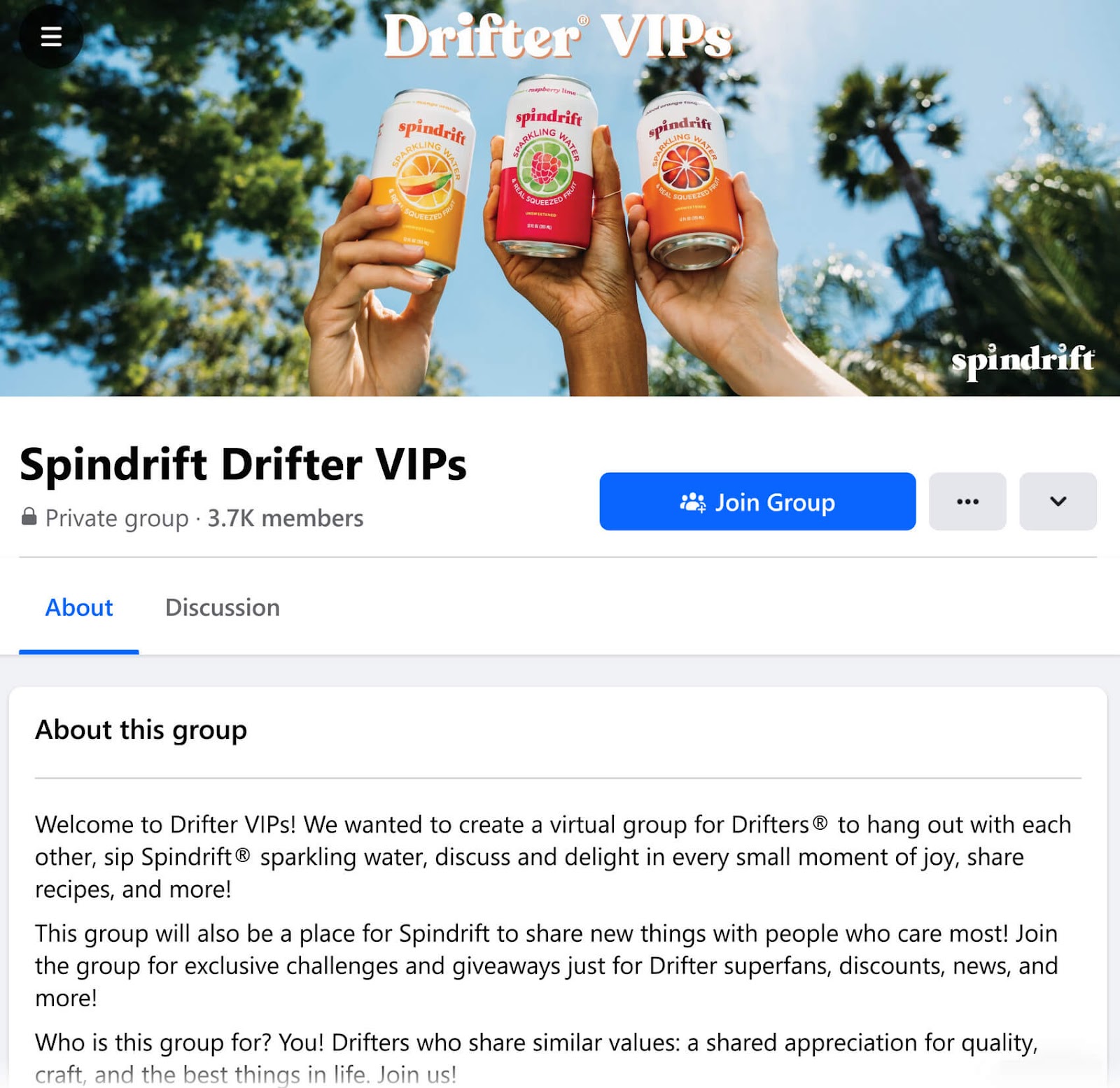
Strategy 9: Use AI to Identify Audiences for Content Distribution
Which audience segments offer the most value for your brand? How can you distribute content to them in a way that resonates? Use AI-powered tools to analyze your audience and identify opportunities to engage potential customers successfully.
Semrush's Audience Intelligence app provides insights into X (formerly Twitter) audience demographics and interests. Use it to see where your audience lives, which brands they love, and which influencers they follow.
Find Audience Intelligence in the Semrush App Center under the “Social Media” category.
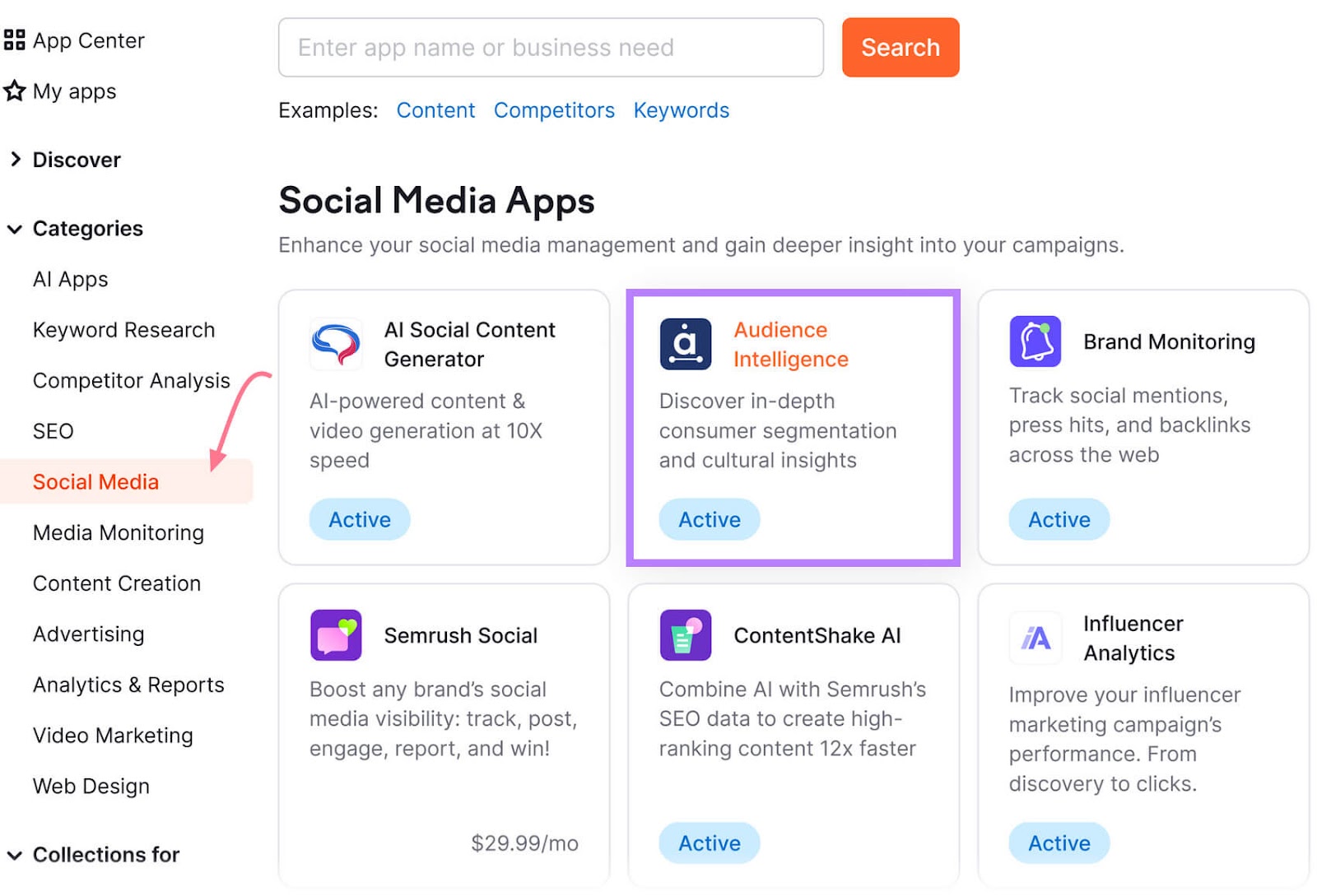
Open the tool and click to create a new report. Give the report a name, input your X handle, and click “Create new report.”
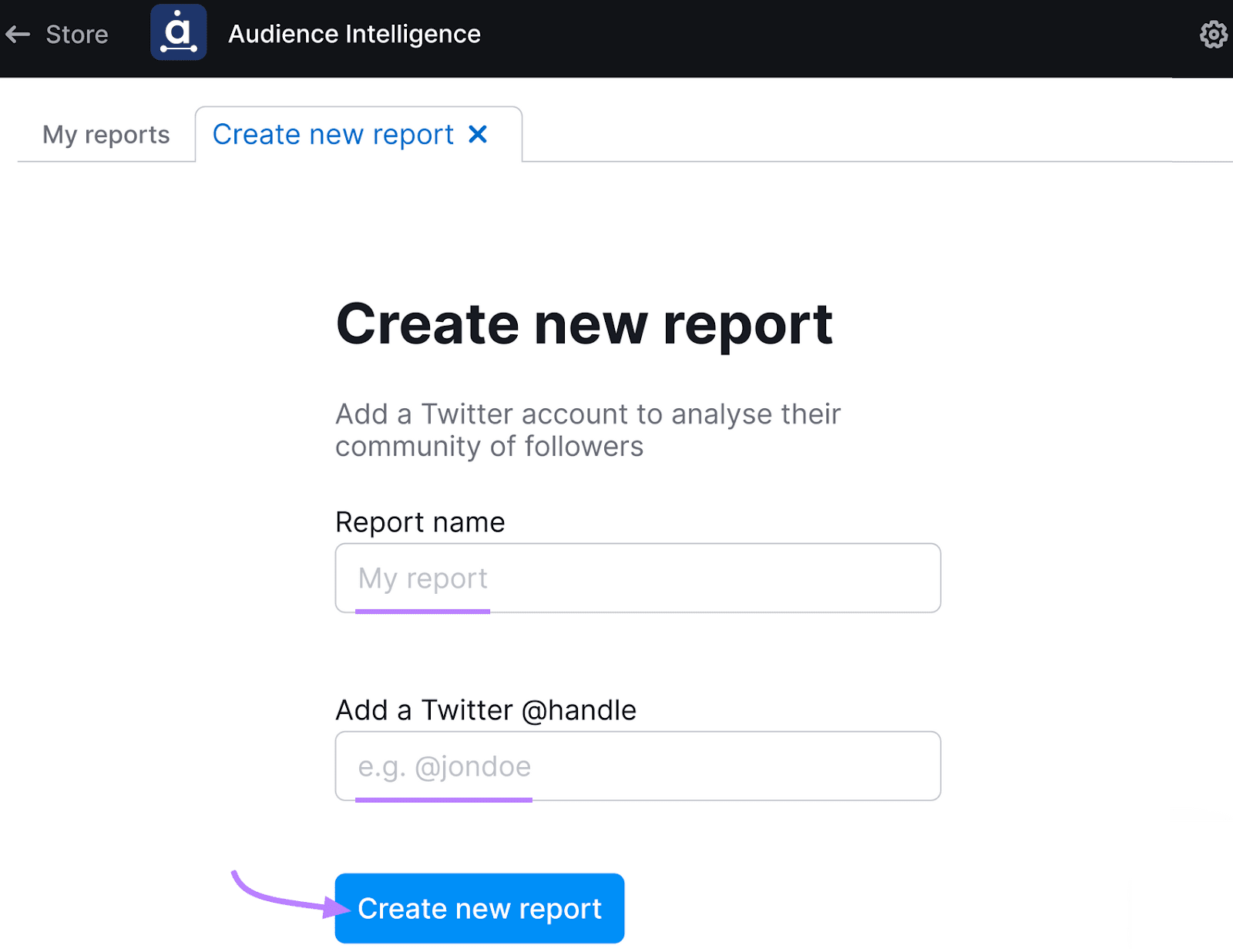
You’ll see audience demographics, top brands, top influencers, and auto-generated segments.
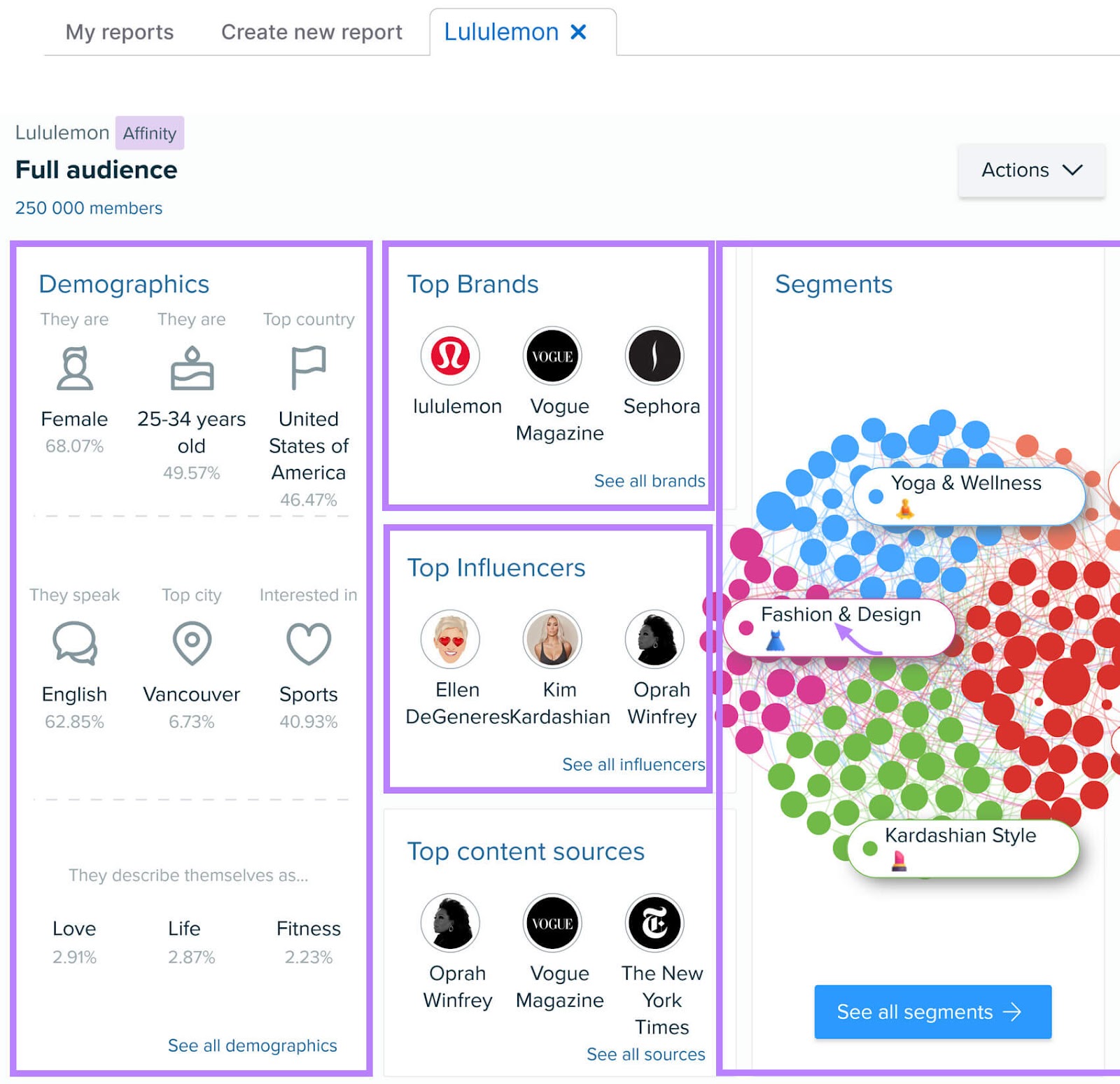
For deeper insights, select one of the audience segments. The app shows data like popular keywords, top-performing social media posts, and buying mindset for each segment.
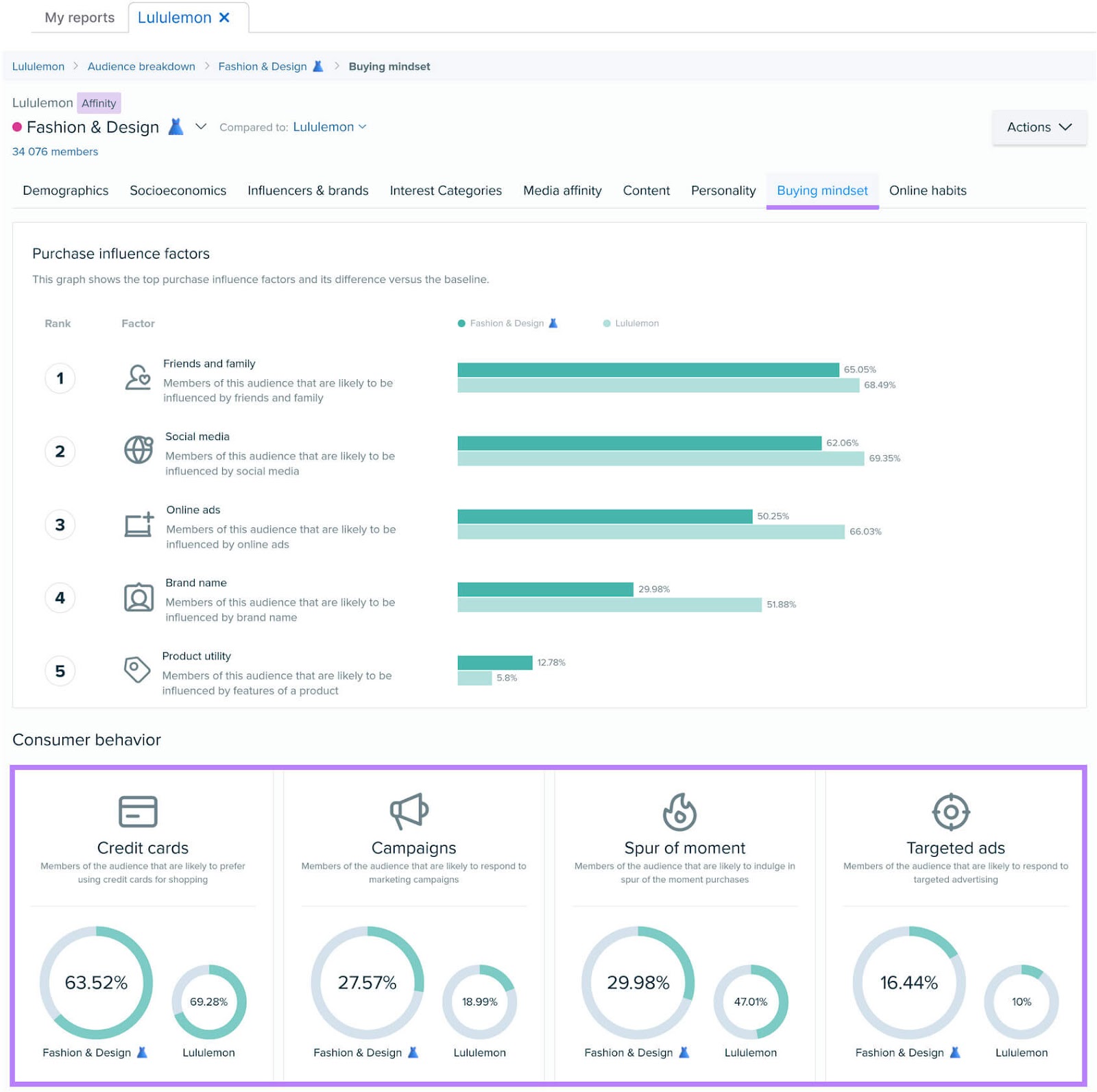
Use these insights to personalize content distribution. Incorporate these preferences into promotional content for your most valuable audiences.
Strategy 10: Repurpose Content in Different Formats
When you repurpose content in new formats, you create more chances to connect with customers.
Think about it this way:
When you share a blog post via a text-based social media post, your content appeals to people who stop scrolling to read. When you turn a blog post into a video, you reach the people who prefer to watch short-form videos on social media.
AI-powered content repurposing tools can transform an asset from one format to another. They save you time by turning text-based content like blog posts into visual content like graphics or videos.
Semrush's AI Social Content Generator app creates social media posts from written content.
Find the AI Social Content Generator in the Semrush App Center under the “AI Apps” category.
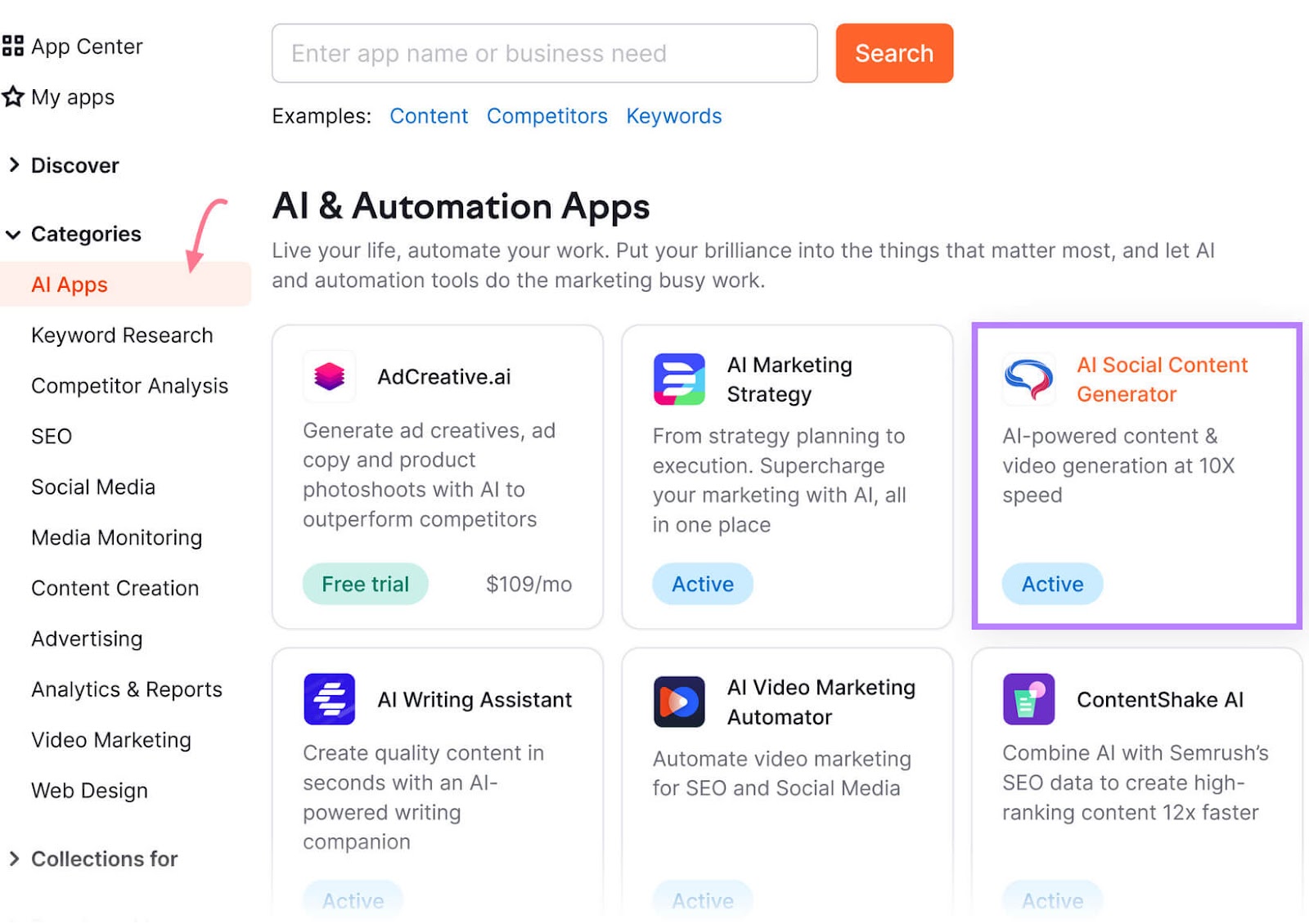
You'll be prompted to upload a logo, choose colors, and set fonts in your “brand page.”
To design social media content from a blog post, click the “Create New” button in the upper-right corner and then click “Blog to Post.”
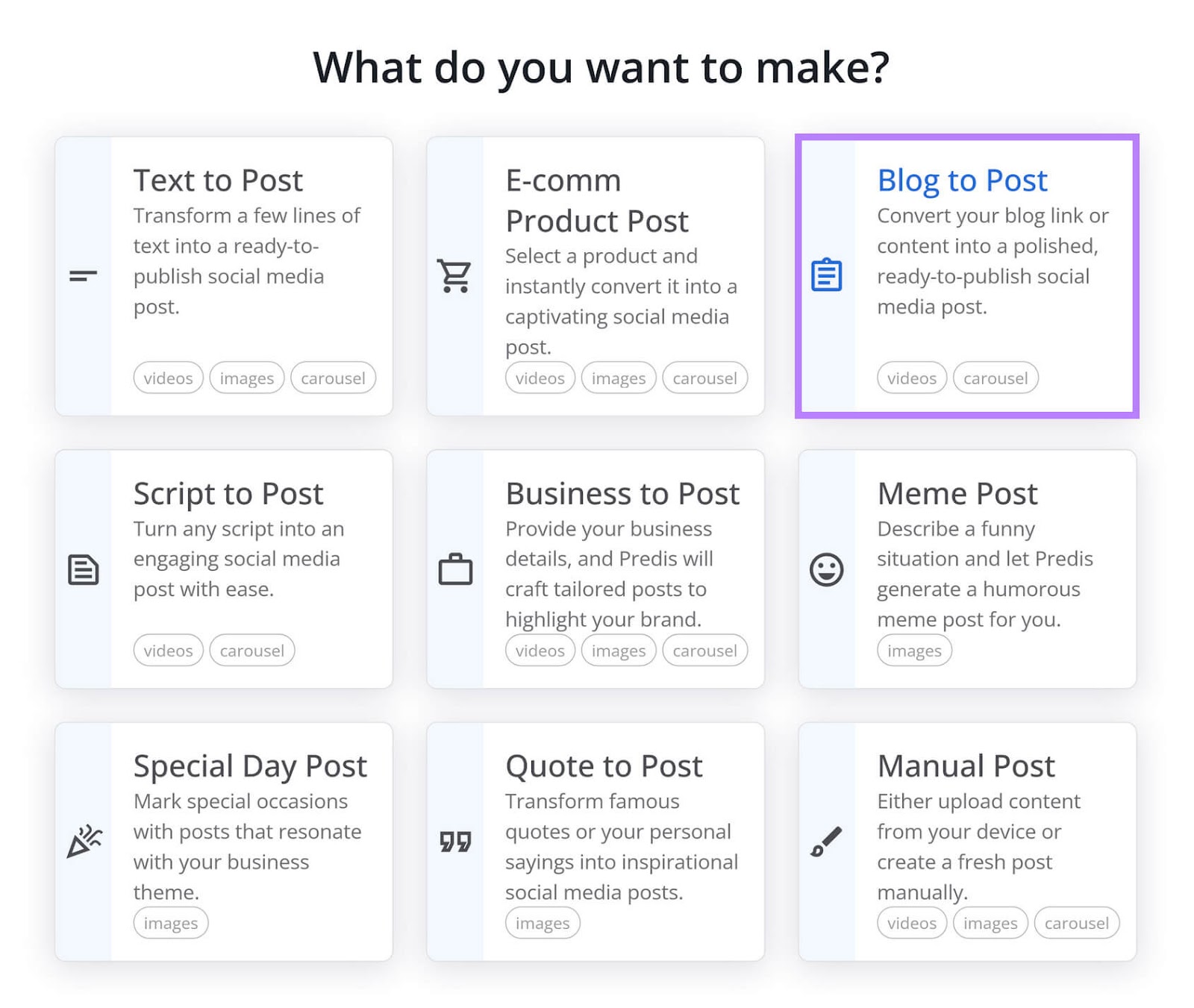
Enter the URL, confirm the script from the blog, and choose a long video, carousel, or video with voice-over template. Click “GENERATE.”
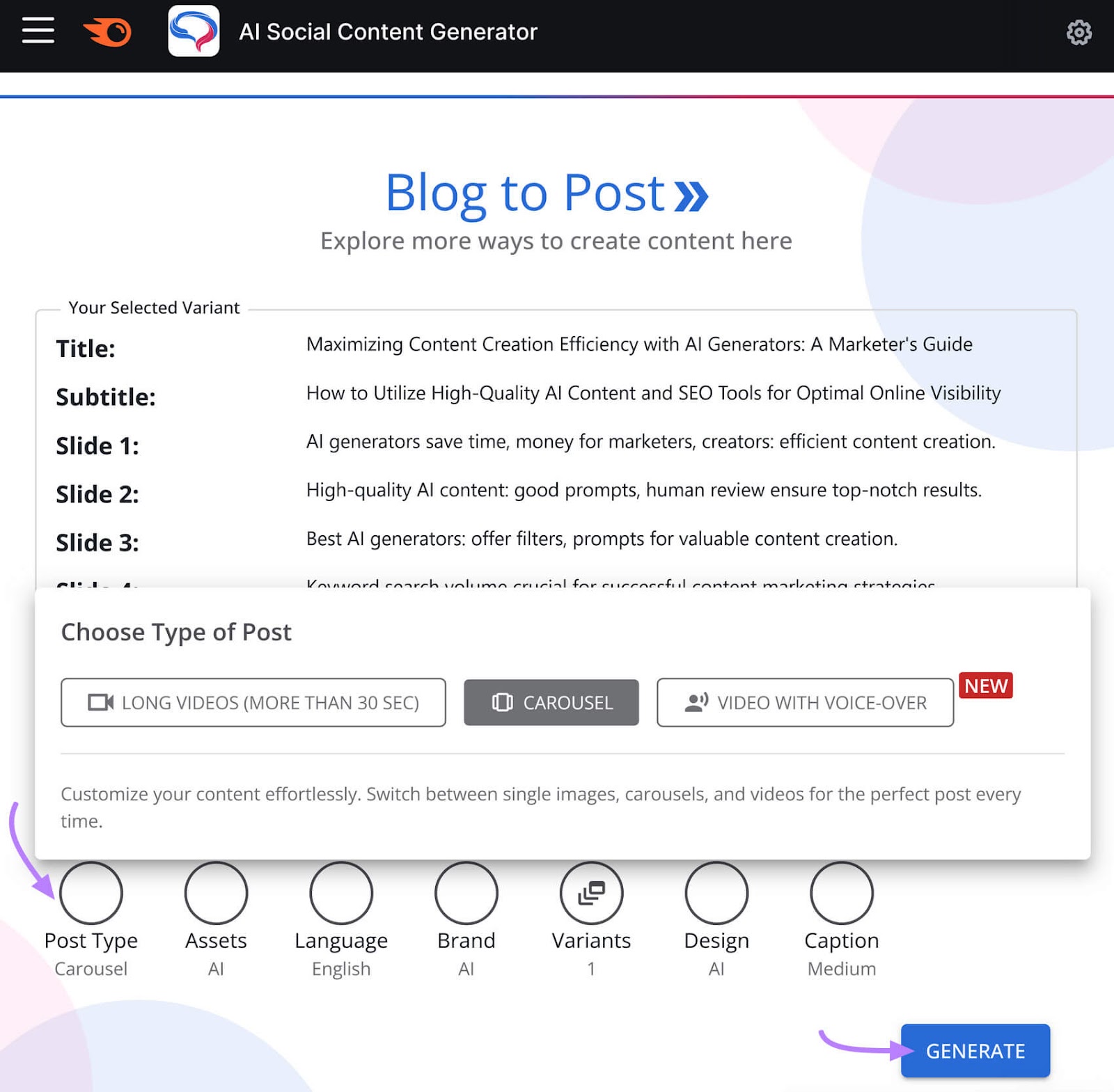
Then, let AI design the post for you. Download the post and publish it to social media.
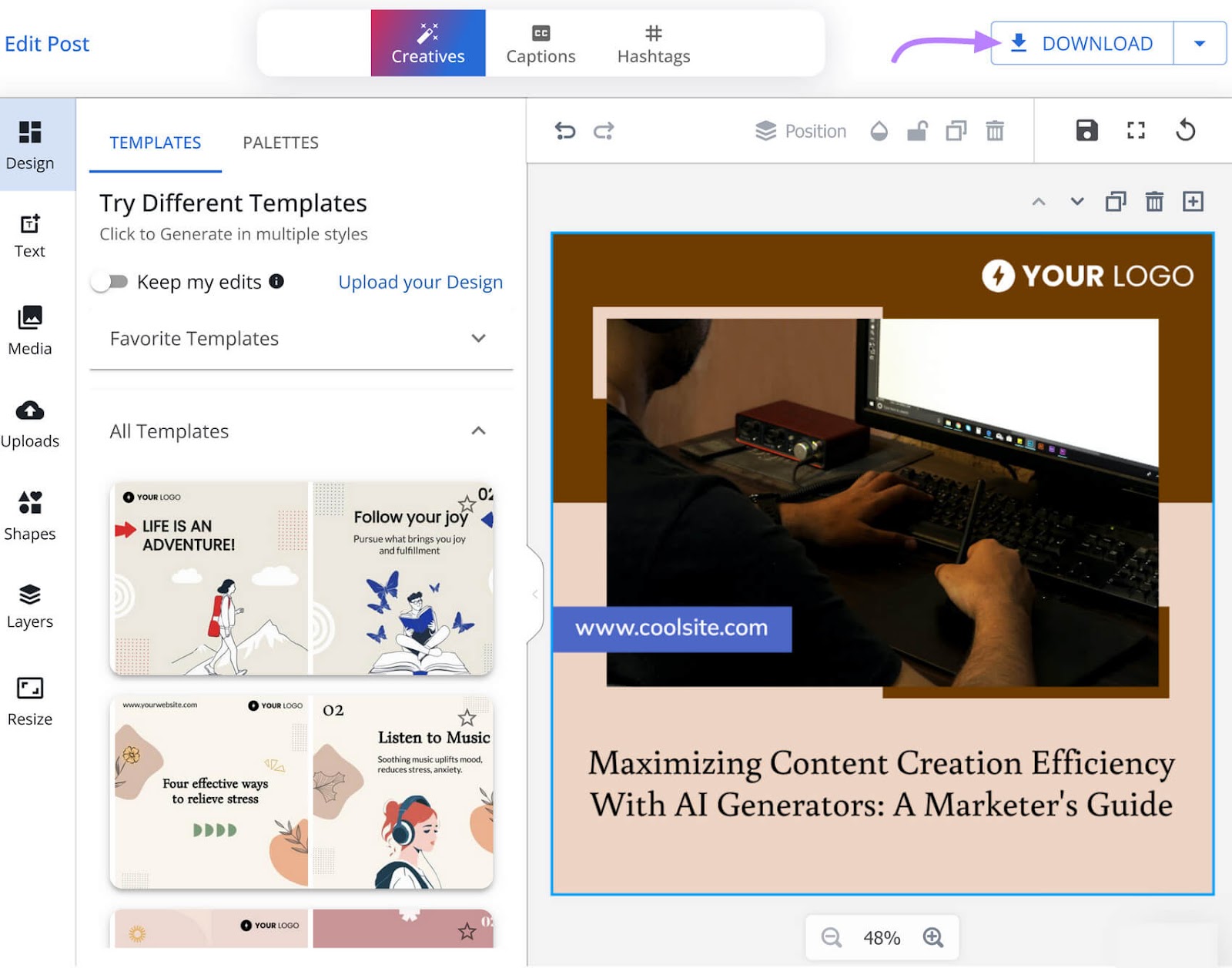
Strategy 11: Embrace Interactive Creative Assets
If engagement is your goal, promote content using interactive rather than static assets.
Interactive content that’s shared online is 52.6% more engaging and can lead to 94% higher improvement in views than shared static content, according to Mediafly.
So, what kind of interactive content should you distribute? Think about:
- Social media carousels that require users to scroll through
- Software demos that show users how your platform works
- Calculators that solve problems and provide custom answers
- Interactive infographics that share data in an engaging way
Social media carousels are a relatively simple way to experiment with interactive content. Add your content to a carousel template in a design app like Canva. Then, upload the content to a social media platform like LinkedIn.
This is an example of an interactive carousel on LinkedIn by Lavender. It shows followers how to set up a cold email campaign.
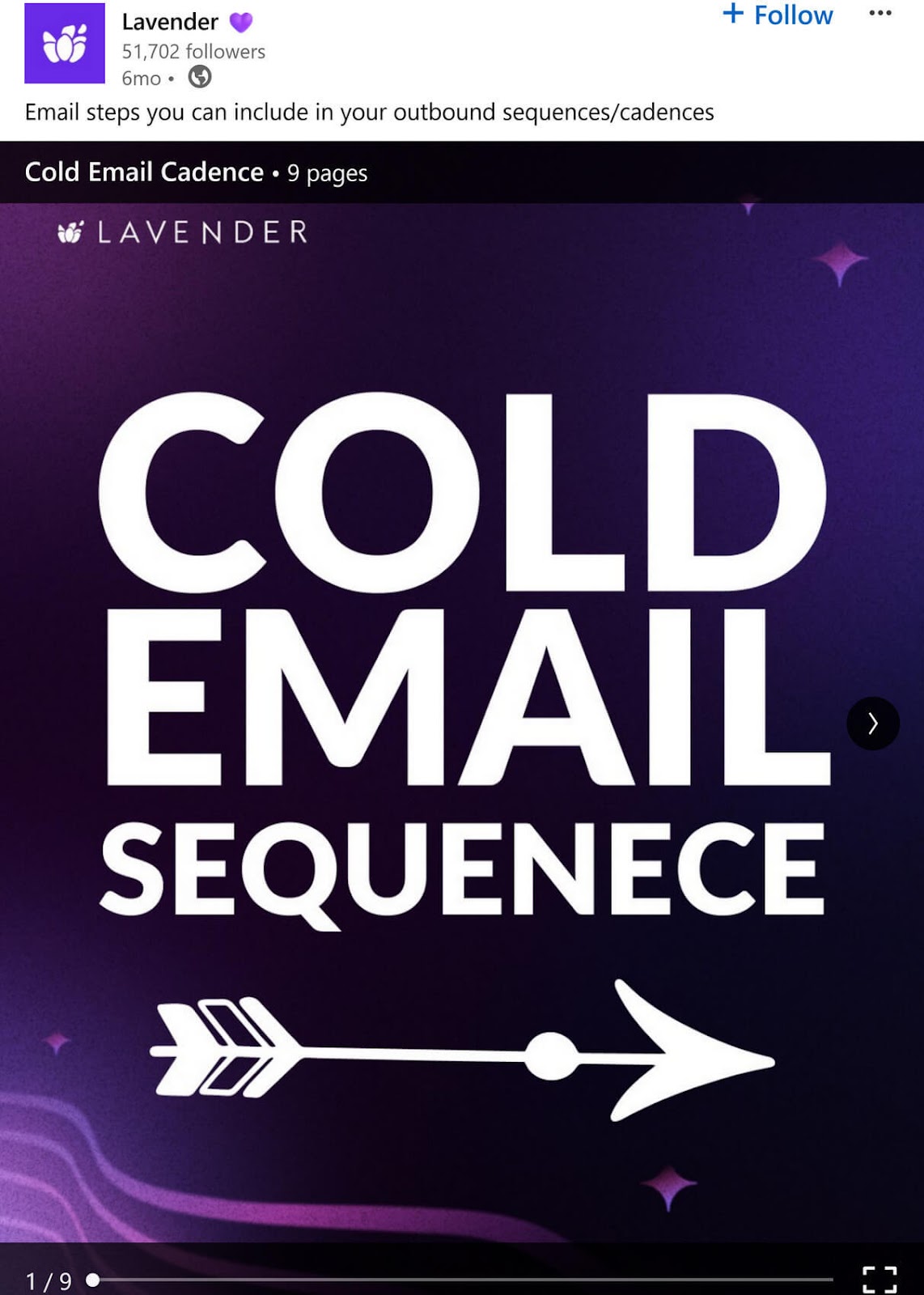
LinkedIn users can swipe or scroll through the carousel to view the content, which includes a step-by-step workflow.
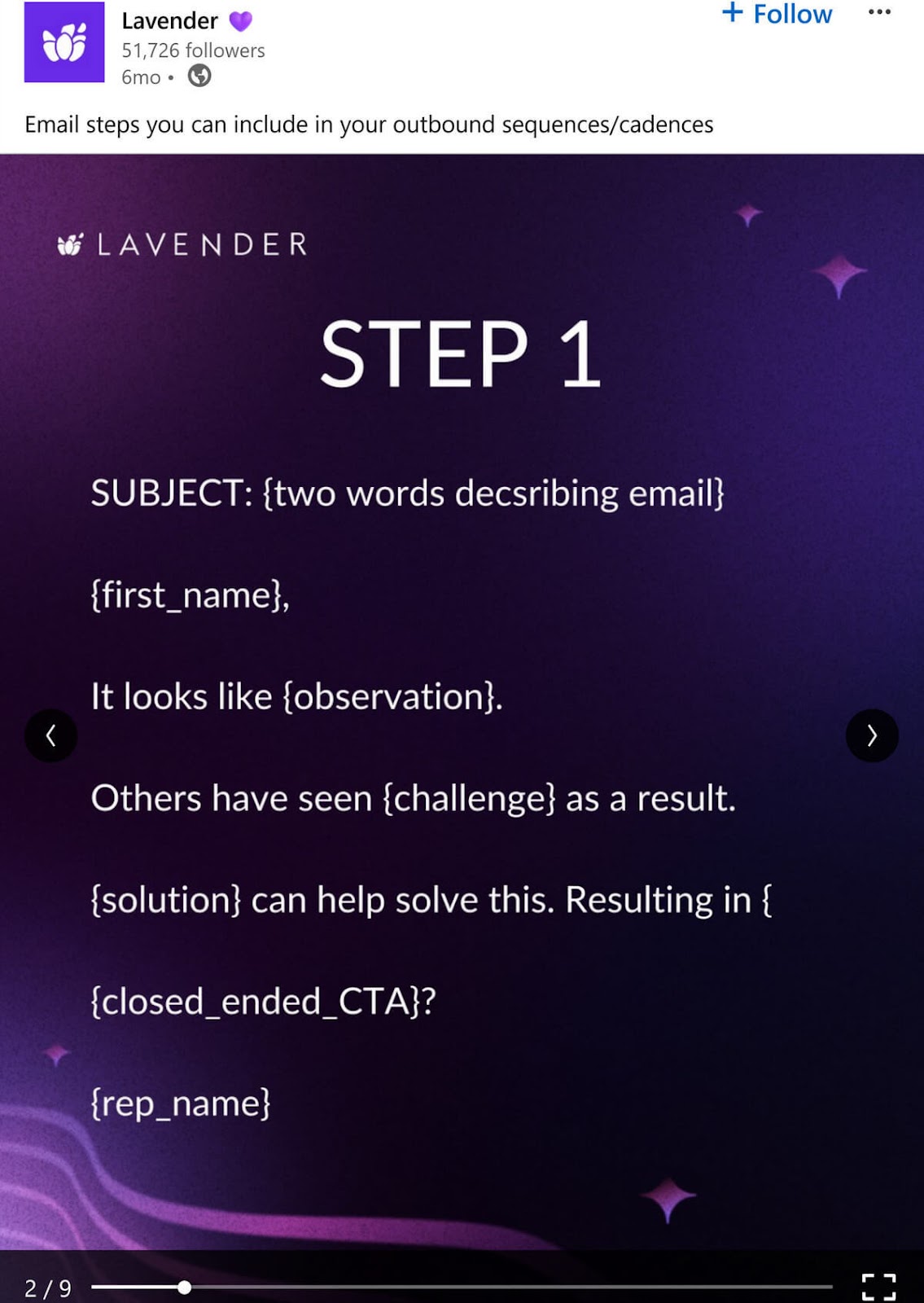
Quizzes and polls also give audiences an engaging way to interact with your brand. Use them to gather data and distribute relevant content.
When you have one relatively straightforward multiple-choice question to ask, create a poll. Most social media platforms have built-in poll tools that let followers vote with a single click.
For example, this LinkedIn poll by Social Media Examiner asks followers where they source news about the status of Instagram and Facebook.
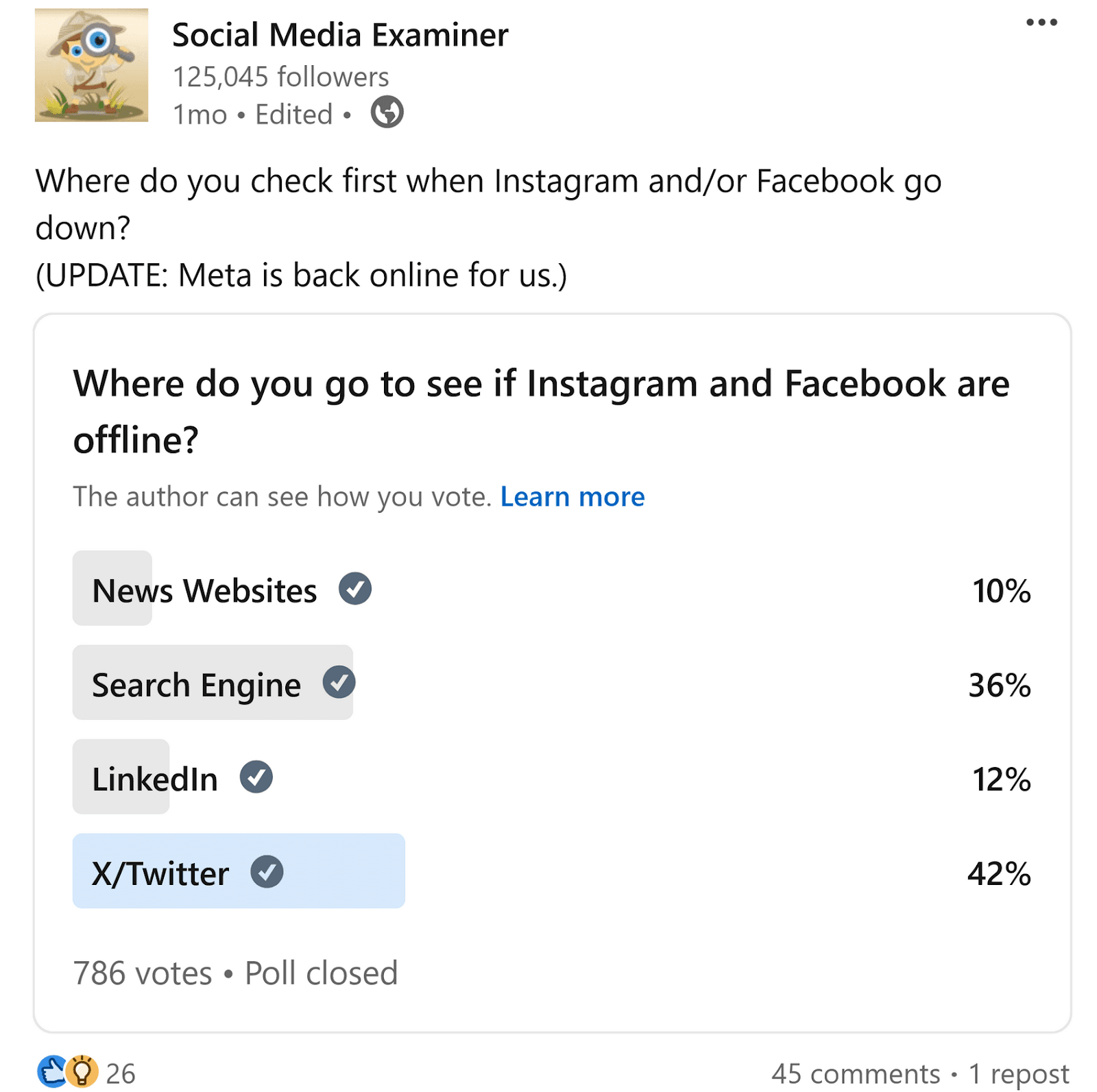
Based on the results, the publisher can share relevant links in the comments or promote helpful content on the audience's preferred platform.
When you have a longer list of questions to ask, create a quiz and distribute it on social media instead. Quizzes can direct users toward a content resource based on their responses to questions.
Strategy 12: Capitalize on Video Content
In 2024, 91% of businesses use video for marketing, according to Wyzowl. Using this format helps content marketers attract some of the billions of views video platforms generate every day.
- YouTube alone tallies more than 1 billion hours of content viewed on TVs each day, according to YouTube
- Americans spend 4.43 billion minutes using TikTok each day, according to Backlinko
To produce video efficiently, you don't necessarily need to create it from scratch. Instead, use an AI tool.
Semrush's AI Video Marketing Automator app turns blog posts into videos.
Find the AI Video Marketing Automator in the Semrush App Center under the “AI Apps” category.
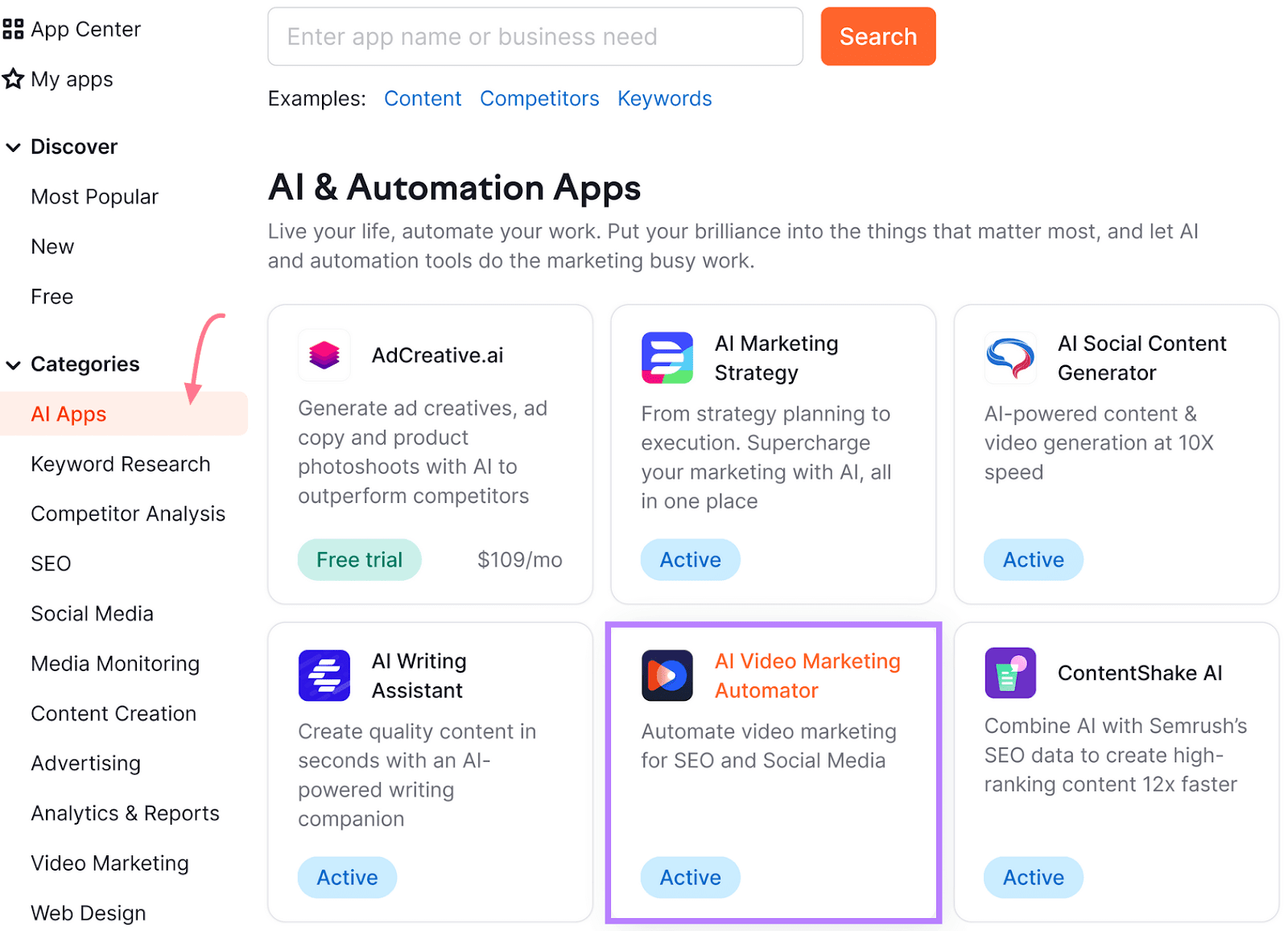
To begin, select the “URL to Video” button.
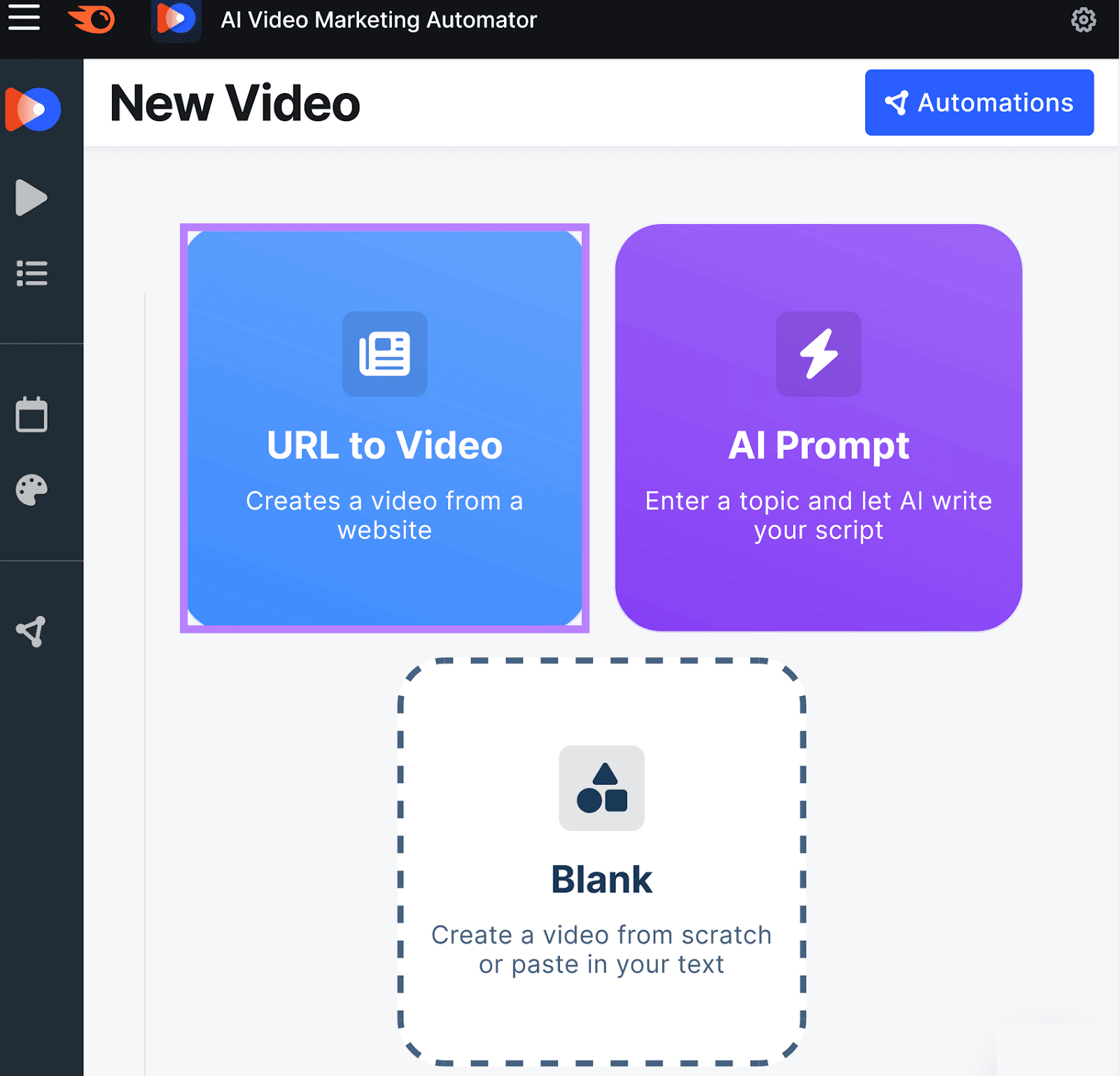
Input the URL for your text-based asset. Choose a video type, length, brand kit, and image style. Then click “Create Video.”
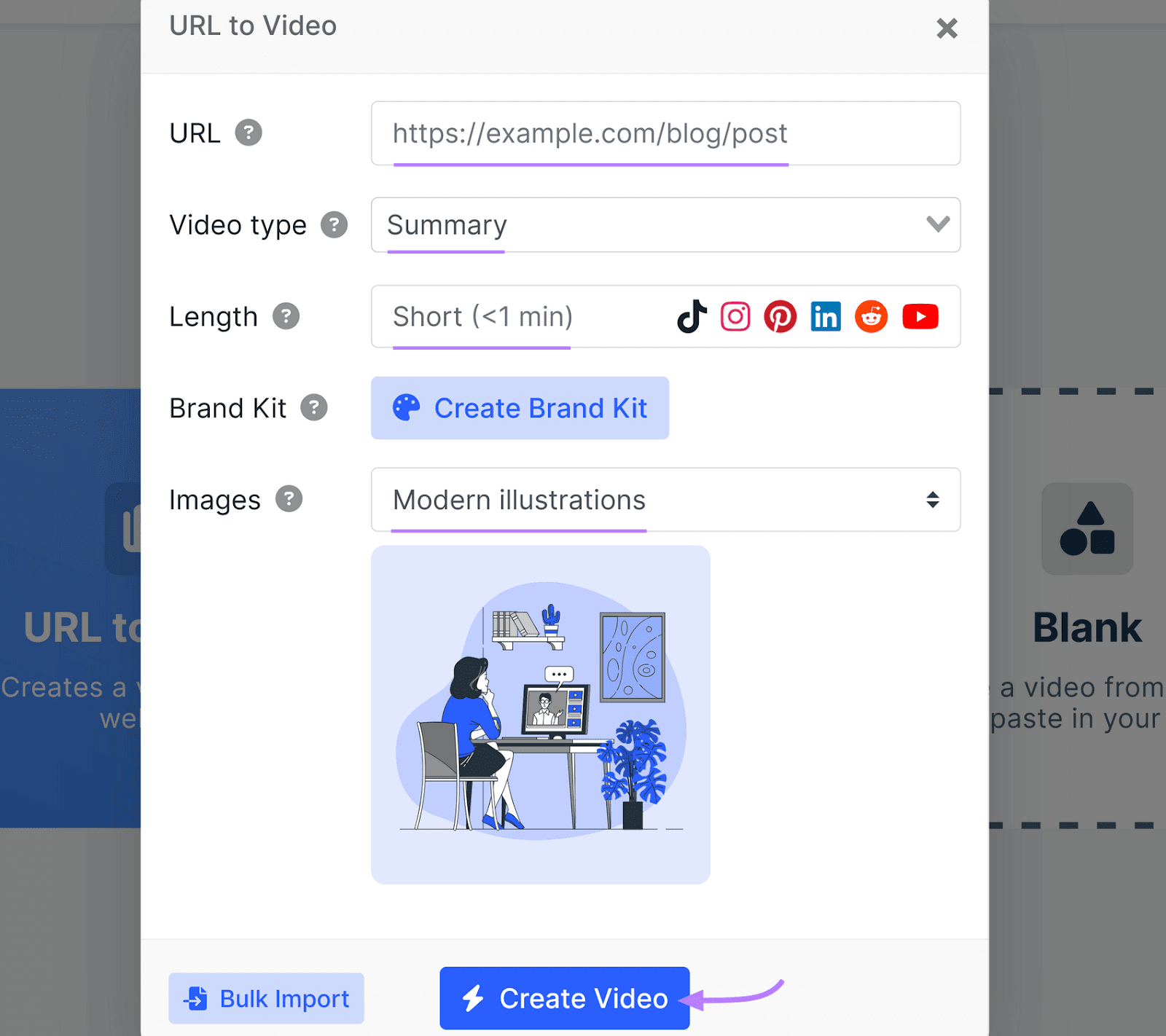
Then, export the video and post it on social media.
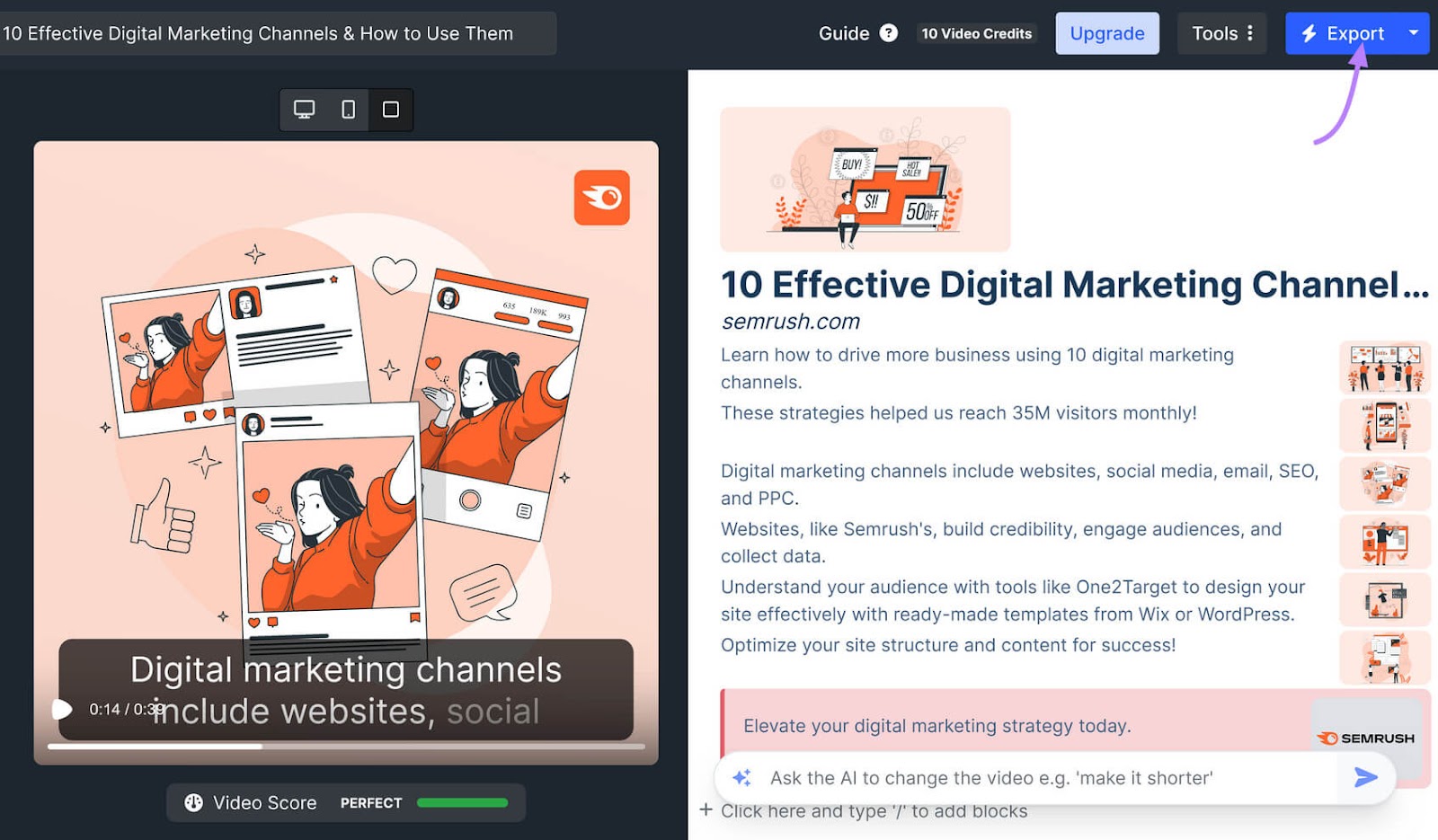
Strategy 13: Prepare for Emerging Technologies
Emerging technologies like augmented reality (AR) and virtual reality (VR) create interactive spaces for customers to experience your brand.
Many AR and VR experiences target customers as they contemplate a purchase. With these technologies, customers can try on your products. Or see how your products look in their space.
For example, Mac's Virtual Try-On Tool lets customers test makeup virtually before buying.
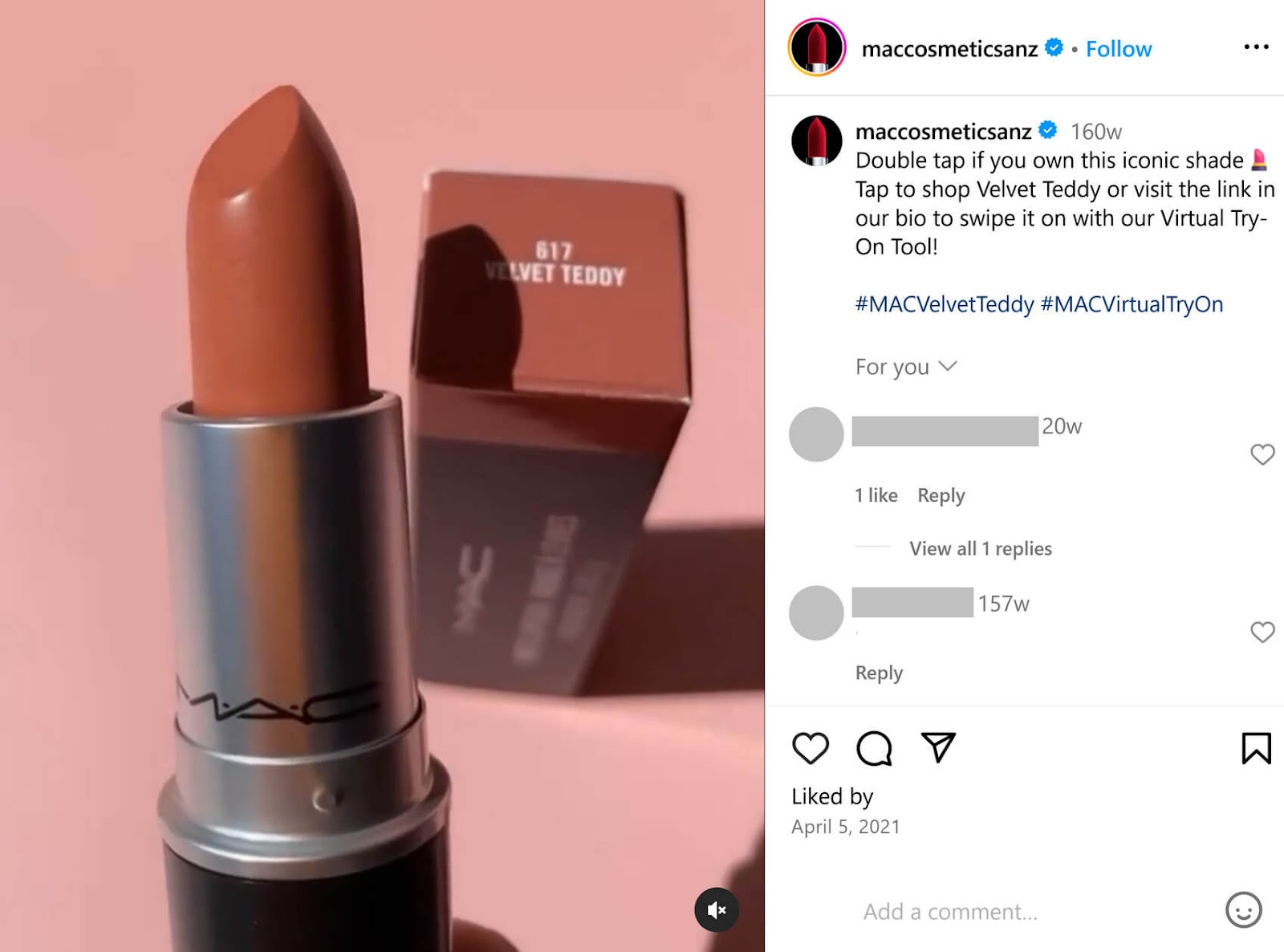
Customers can use these tools to guide purchases. They can also share their AR or VR experience on social media, which aids with content promotion.
Strategy 14: Develop Influencer Partnerships
When you work with influencers, you get a chance to promote content beyond your own audience. You reach their followers too.
Influencers already have engaged audiences who trust them. That means they can promote your content to an audience who's likely to listen and respond positively.
To succeed with influencer marketing, you need the right partners. Consider the influencer's:
- Niche: Do their interests and specialties align with the type of audience you want to reach?
- Platforms: Which social media platforms does the influencer use? Does the list include channels that matter to your brand?
- Audience size: Is the influencer's following large enough to reach a sizable audience? Is their engagement rate high enough for a meaningful collaboration?
Use Semrush's Influencer Analytics app to find and evaluate potential brand partners.
Find Influencer Analytics in the Semrush App Center under the “Social Media” category.

From the main menu, click “Search by keywords.” Then select “YouTube Videos” from the drop-down menu.
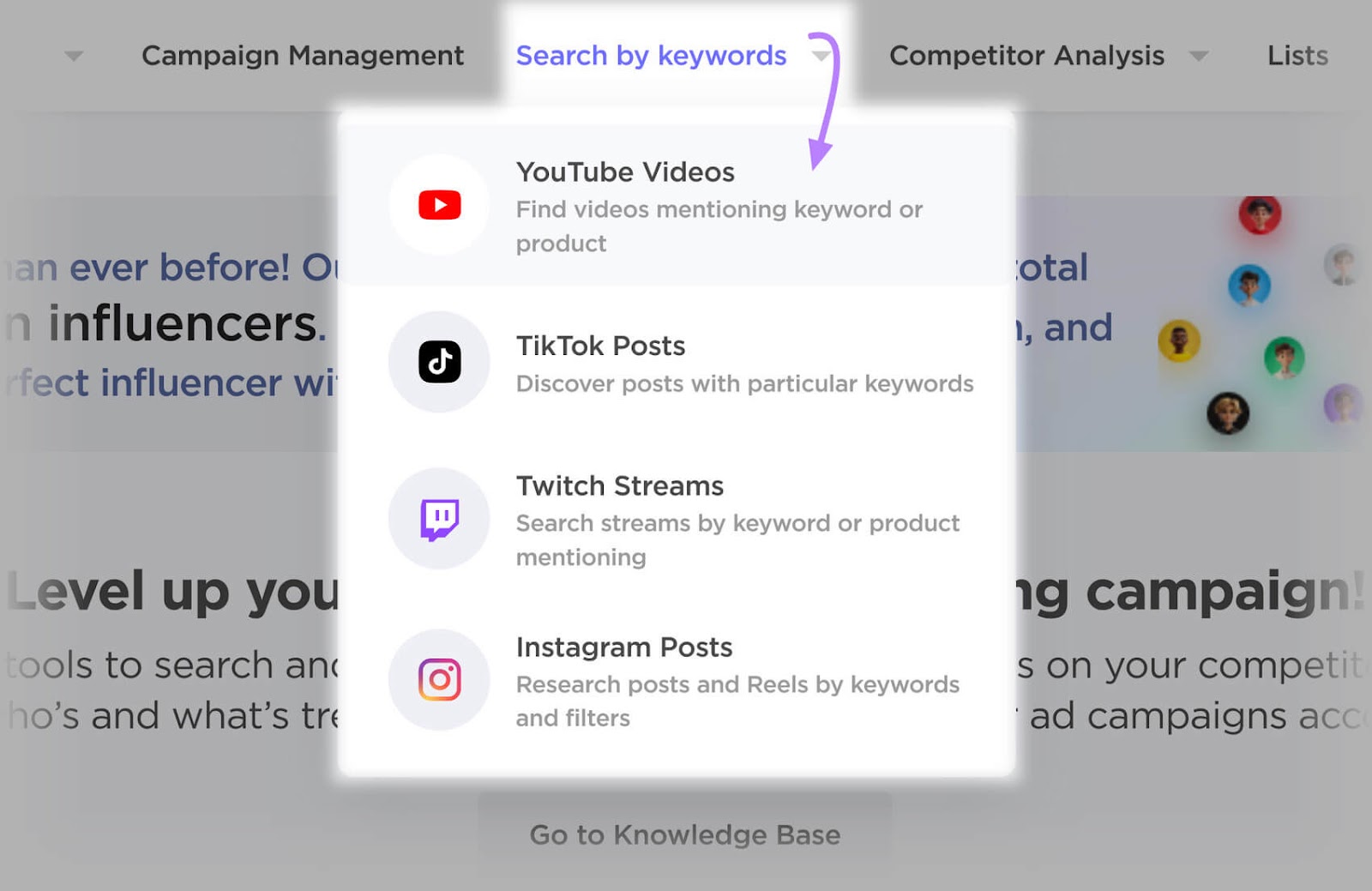
Enter relevant keywords and use filters to find creators by the views and engagement their content generates.
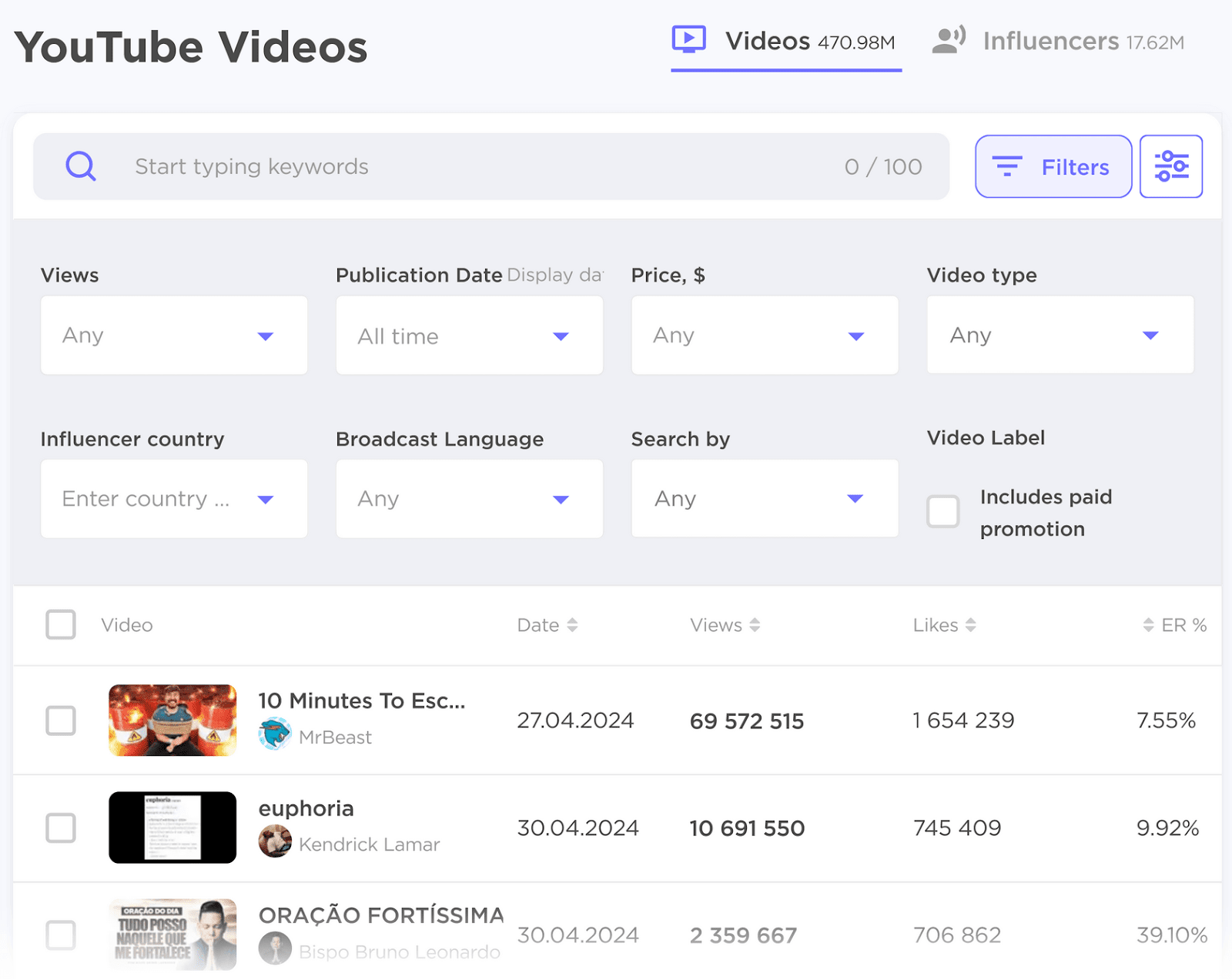
Reach out to relevant influencers. Build, manage, and analyze influencer campaigns from your Influencer Analytics dashboard.
Strategy 15: Tag and Share Content with Experts You Quoted
Did you quote someone with topic authority in your content? Tag them on social media when you share it!
They may be inclined to reshare your post. Or even promote the content you quoted them in. Either way, your content reaches their followers, which expands your total distribution.
As you can see in the X thread below, Semrush highlighted several quotes and tagged each contributor. The last post in the thread includes a link to the full article.
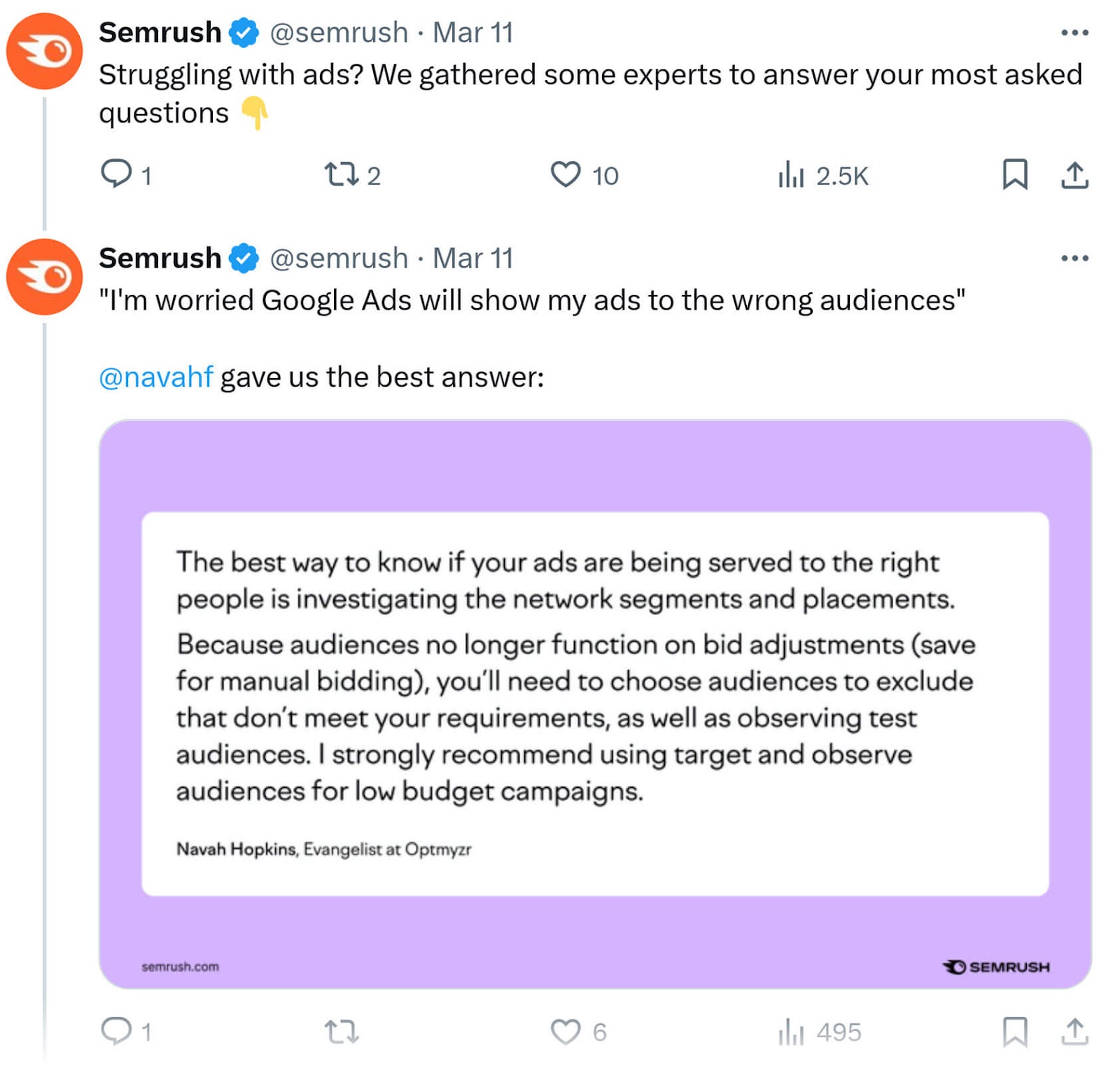
For a more direct approach, share content links directly with the people you quoted. Send an outreach email or a direct message (DM).
This serves two purposes.
First, it allows you to thank those who helped you create high-quality content. This can go a long way in building relationships, which can help with future content. Second, sending links to your content can inspire your sources to share that content with their own social media followers or newsletter subscribers. That gets your content promoted to a wider audience.
Strategy 16: Collaborate on Content with Other Brands
With co-marketing, two or more brands work together to develop and promote co-branded content. Together, you can distribute the content across multiple audiences.
Choose a brand that has some audience overlap with your own, such as a business with complementary products or services. After all, you want to develop a campaign that appeals to both customer bases.
Work together to decide on a concept, choose a timeline, and set marketing goals. Use the content marketing tips above to maximize the value of the co-marketing partnership. For example:
- Cross-promote the content across multiple channels
- Tag the brand and any influencers to increase shares
- Whenever possible, make the content interactive
Below, Commsor (a community-building platform) and Sendoso (a gifting platform) co-promote a Secret Santa project via a LinkedIn post. This co-marketing project involved more than a dozen B2B influencers, who each created short-form videos revealing their Secret Santa gifts.
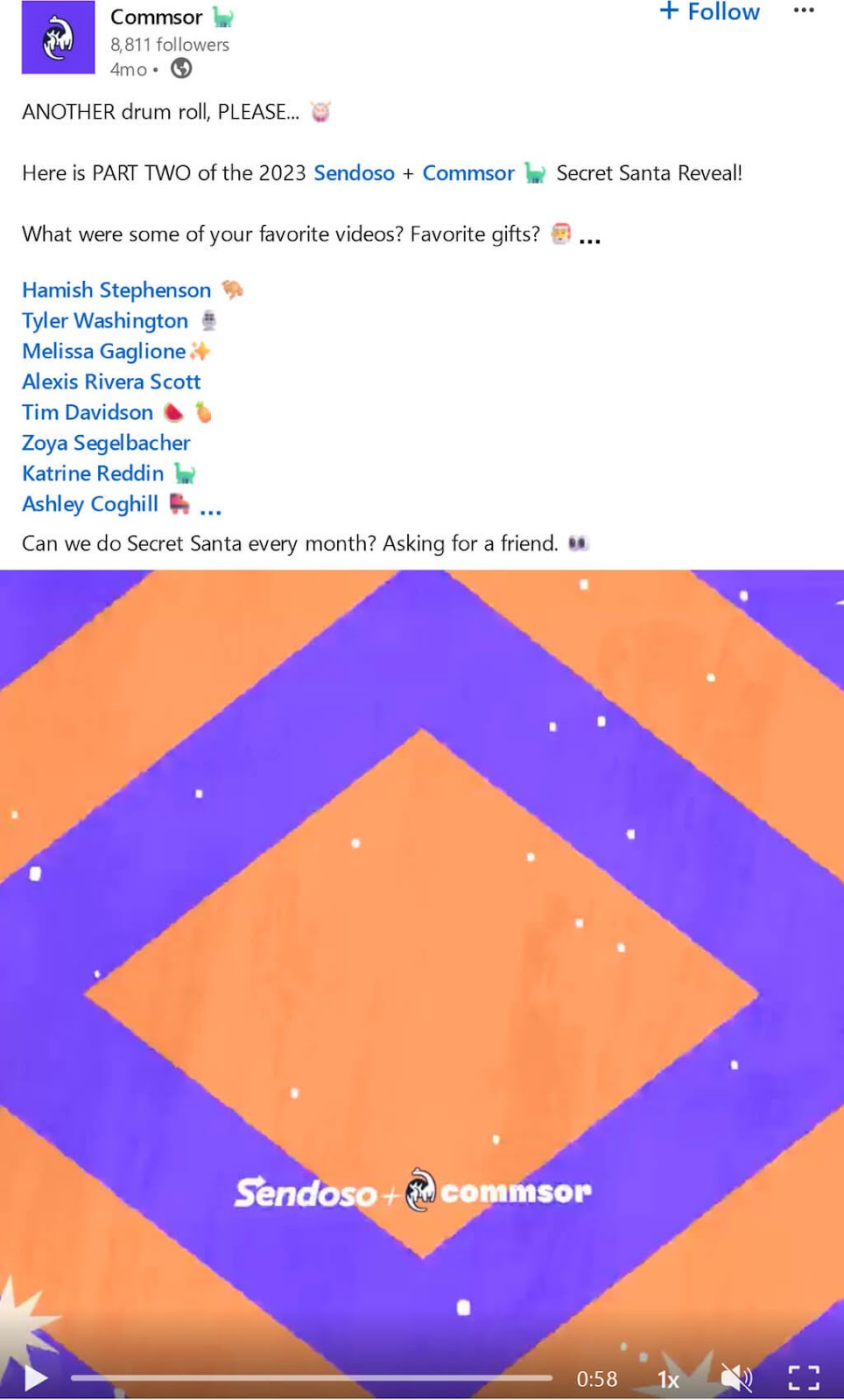
Strategy 17: Use Analytics Insights to Optimize Content
To get more value from your promotional efforts, use analytics to discover what works best for your brand.
Regularly review analytics for campaigns in every marketing channel, including social media, paid search, and SEO. Look for the content and the channel that drove the most results (likes, shares, and website traffic).
Semrush's Social Dashboard tracks social media posts on Facebook, Instagram, and LinkedIn. Use the dashboard to find the posts that performed best.
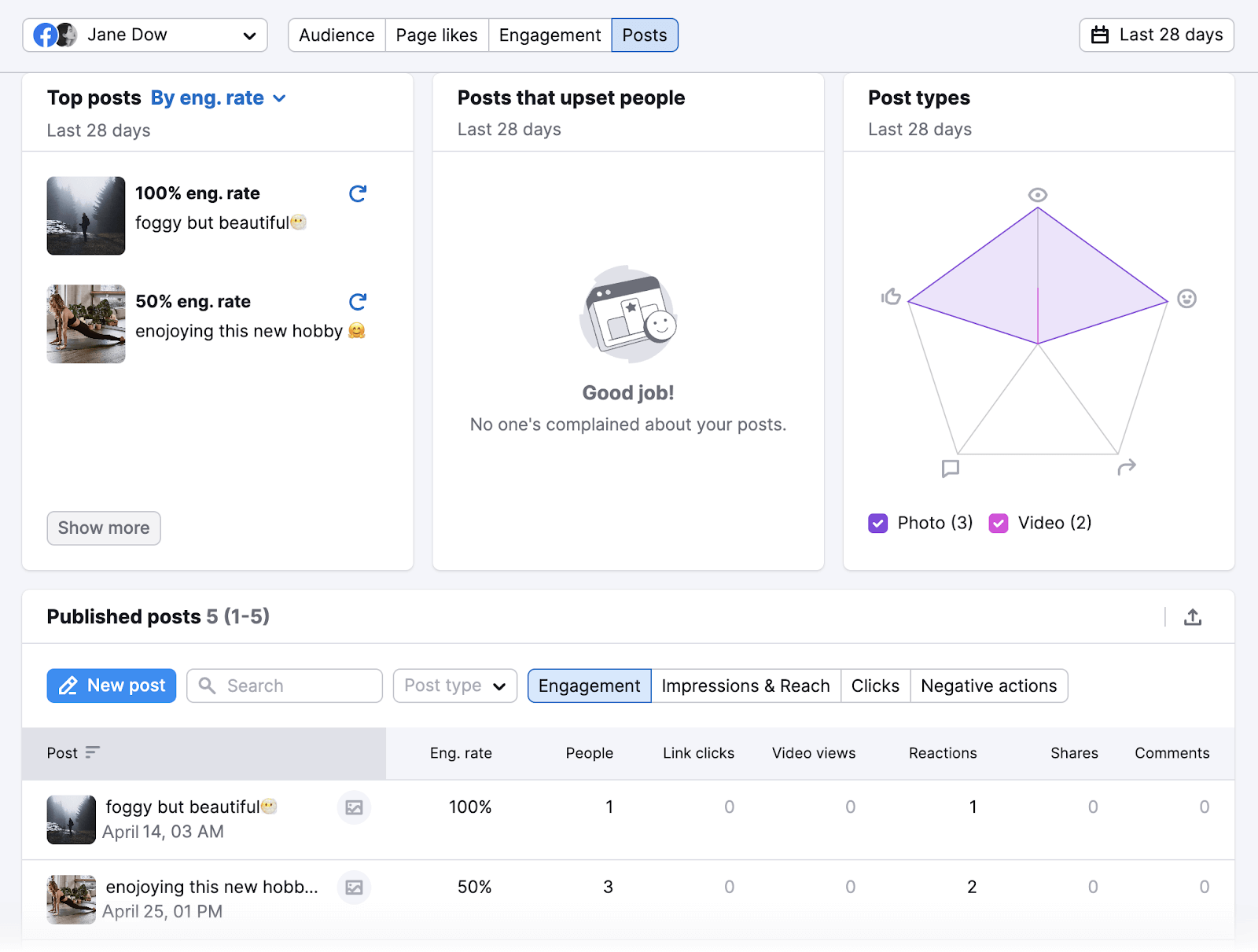
Once you know what’s working well, reverse engineer your best posts. Use the learnings to optimize future content.
For example:
- Confirm the channels that drive the most results—launch more promotions there
- Find the formats (text, image, video, audio) that resonate best—create more of them
- Pinpoint the captions that work best—use them as a template for any new cations you write
- Identify the calls to action (CTAs) that lead to the most engagement and traffic—repeat them
Strategy 18: Explore Paid Promotion Channels
Paid promotion tactics let you distribute marketing content to new audiences. With sponsored social media posts and pay-per-click (PPC) campaigns, you target potential customers based on:
- Keywords
- Interests
- Demographics
- History of browsing the brand's website and social media
When should you prioritize paid promotion over organic strategies? When any of these statements are true:
- You want to reach social media users who don't follow your brand's page or account
- You want to reach people as they search for keywords related to your products and services
- You want to get promotional content in front of potential customers faster and more frequently than you could with organic content
To find the paid tactics that are most likely to maximize return on investment (ROI), do competitive research.
Analyze your competitors' advertising strategies with Semrush's Advertising Research tool.
Log in to Semrush.
Click the “Advertising” option from the menu on the left-hand side. Then click “Advertising Research” in the ”MARKET ANALYSIS” section.
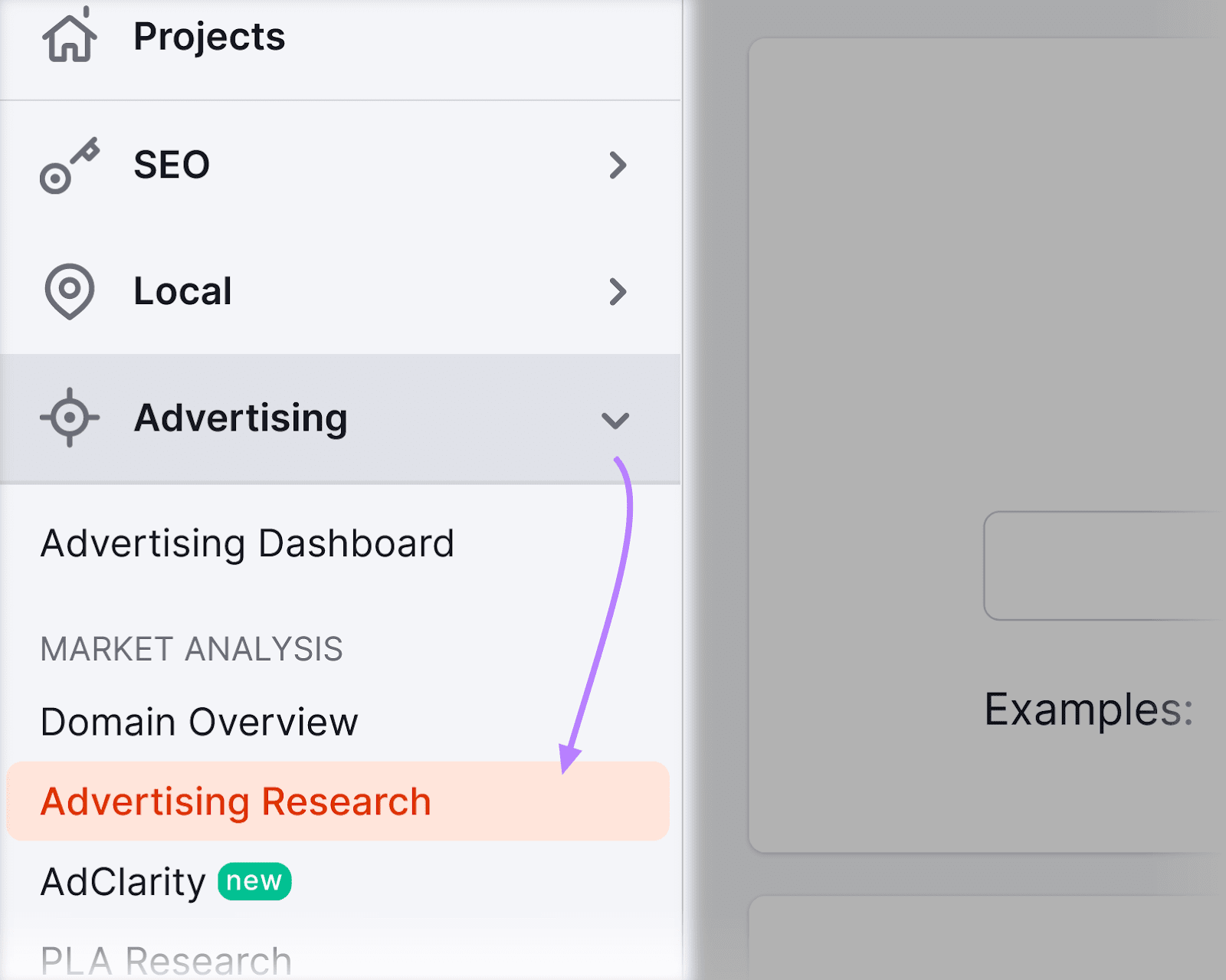
Enter a competitor’s website URL. Select a location using the drop-down if you want to. Then click “Search.”
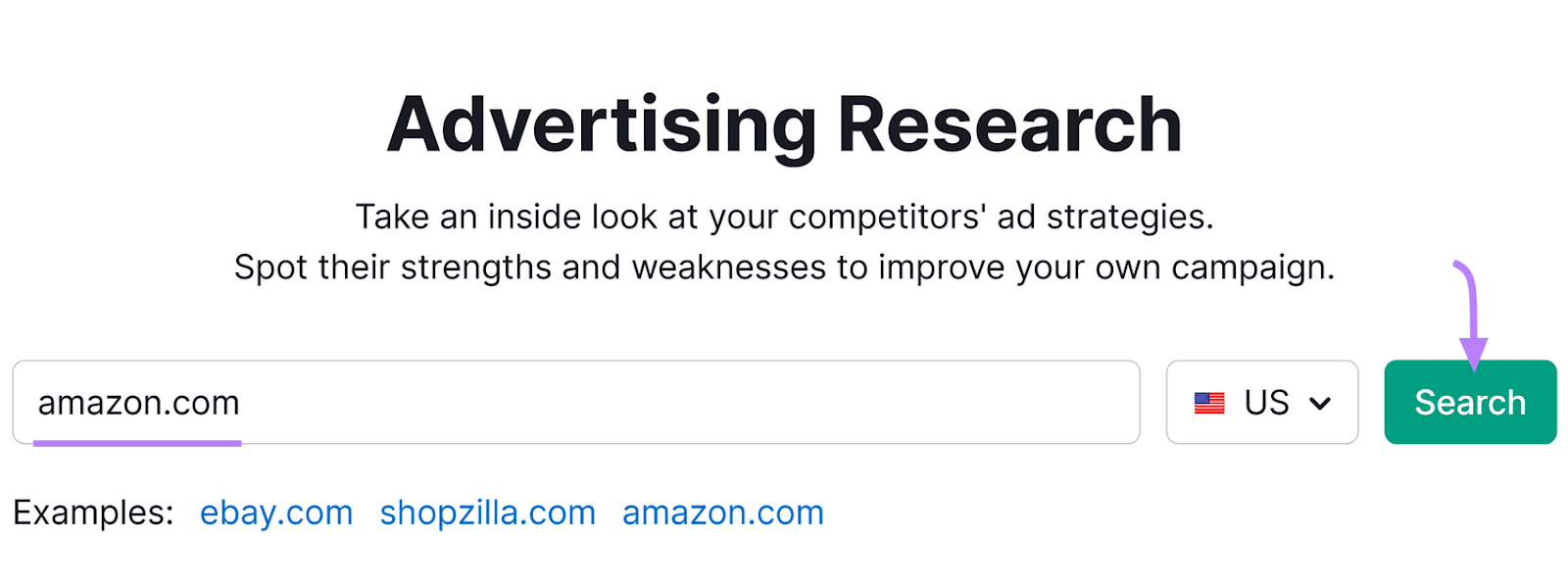
Review how much website traffic they get from paid search, which keywords they target, and how much they spend.
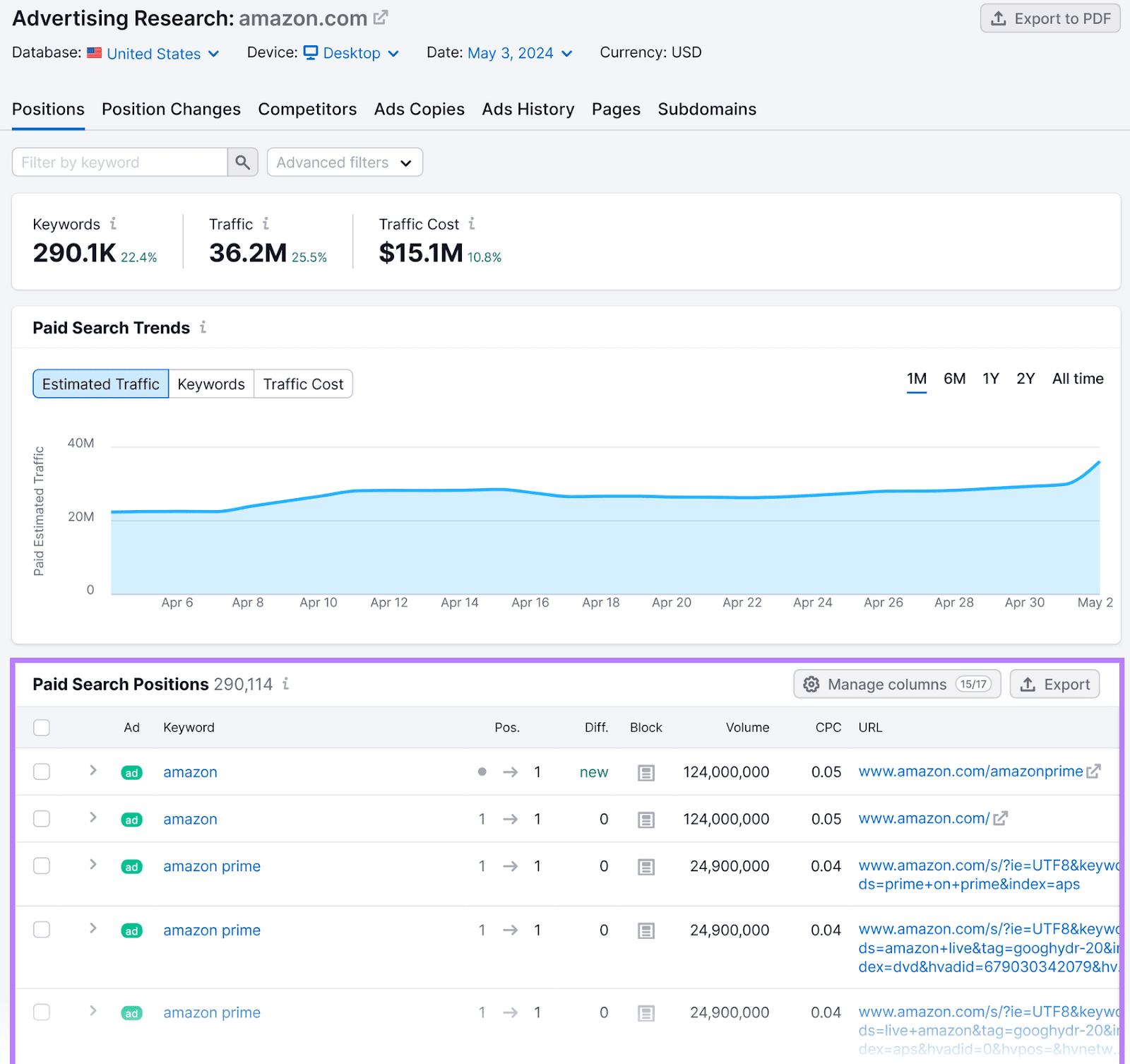
Use this data to get a sense of what you can gain from paid promotion of your own. Then, use these insights to map out your own paid strategy to promote your most valuable content.
Implementing Your Content Promotion Strategy
Put your content promotion ideas to work by setting a budget and creating a calendar.
Create a Content Promotion Calendar
To get maximum value from content promotion, create a content calendar to track your efforts across channels. By scheduling shares and outreach, you distribute content as widely as possible without missing important steps.
Content teams with smaller budgets can use free and low-cost tools like Google Sheets and Airtable. Teams with larger budgets and more complex workflows can use project management tools like Asana, Trello, or ClickUp.
Set a Budget for Content Creation and Promotion in 2024
Be careful not to spend your whole budget on content promotion. You have to allocate some of it to strategy and content production, too.
As you determine your team's budget, look back at results from the last year or two. Consider:
- What goals did you achieve?
- Which assets had the biggest ROI?
- Which promotion channels delivered the best results?
- What new goals do you want to achieve?
Use these insights to update your budget and establish top spending priorities.
Start Mastering Content Promotion Today
By experimenting with channels and formats, you'll find the ideal mix of content promotion efforts for your business.
Use tools like Semrush's Keyword Magic Tool and Brand Monitoring to simplify keyword research and link building. To automate social promotion, use the Social Dashboard and AI Social Content Generator tools.
It all starts by signing up for a free Semrush trial. Begin leveraging these tools for content promotion today.
